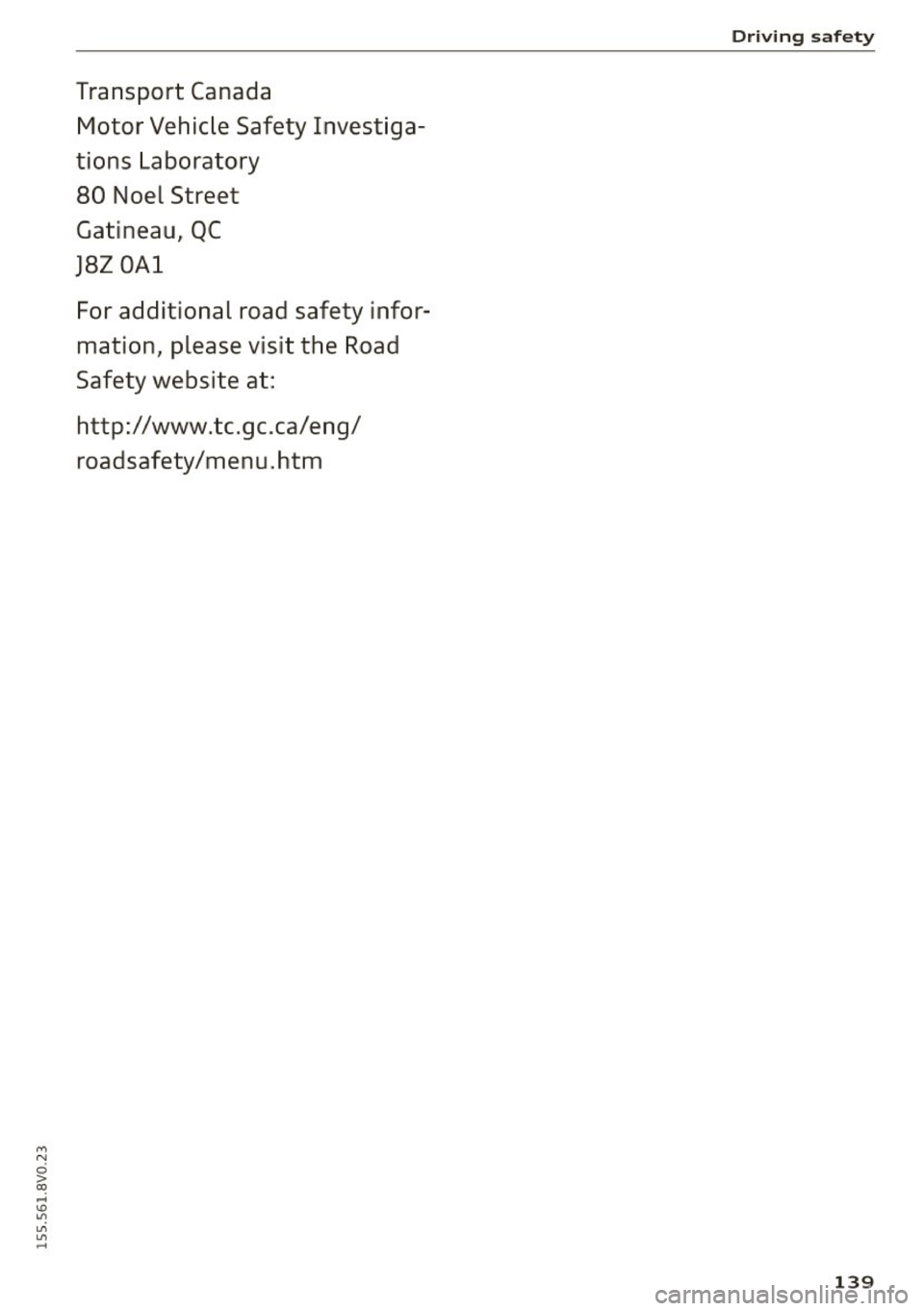Page 137 of 282
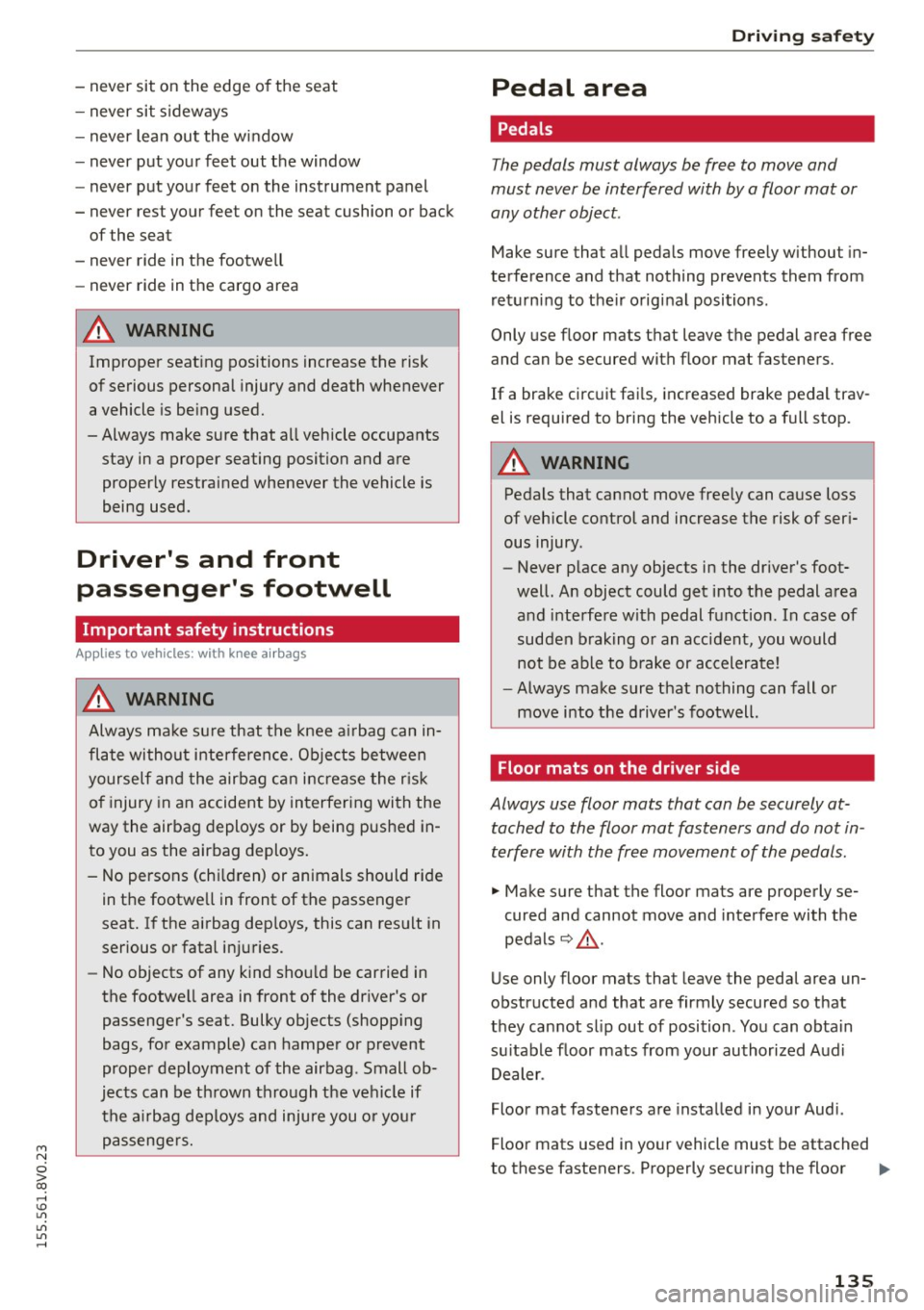
M N
0 > co ,...., \!) 1.1'1
1.1'1
1.1'1
,....,
-never sit on the edge of the seat
- never si t sideways
- never lea n out the w indow
- never p ut yo ur feet out the window
- never put yo ur feet on the instrument panel
- never rest your feet on the seat cushion or back
of the seat
- never ride in the footwe ll
- never ride in the cargo area
&_ WARNING
Improper seat ing positions increase the risk
of serious personal injury and death whenever
a vehicle is be ing used.
- Always make sure that all vehicle occupants
stay in a proper seating position and are
properly restrai ned whenever the vehicle is
being used.
Driver's and front
passenger's footwell
Important safety instructions
App lies to vehicles: with knee airb ags
&_ WARNING
Always ma ke sure that the knee a irbag can in
flate without interference. Objects between
yourself and the airbag can increase the r isk
of injury in an accident by interfering with the
way the airbag deploys or by being pushed in to you as the airbag deploys.
- No persons (chi ldren) or animals should ride
in the footwe ll in front of the passenger
seat.
If the airbag dep loys, this can result in
serious or fatal injuries.
- No objects of any kind shou ld be carried in
the footwe ll area in front of the dr iver's or
passenger's seat. Bulky objects (shopp ing
bags, for example) can hamper or prevent
proper deployment of the airbag . Small ob
jects can be th rown thro ugh the vehicle if
the a irbag deploys and injure you o r you r
passengers.
Dr ivin g s afet y
Pedal area
Pedals
The pedals must always be free to move and
must never be interfered with by a floor mat or
any other object.
Make sure that a ll peda ls move freely without in
terference and that nothing prevents them from
r eturning to the ir original positions.
Only use f loor mats that leave the pedal area free
and can be secured with floor mat fasteners.
If a brake circ uit fa ils, increased brake pedal trav
el is required to bring the vehicle to a full stop.
&_ WARNING
--
Pedals that cannot move free ly can cause loss
of vehicle control and increase the risk of ser i
ous injury .
- Never p lace any objects in the driver's foot
well. An object could get into the pedal area
and interfere with pedal function. In case of
sudden braking o r an accident, you would
not be able to b rake or accelera te!
- Always make sure that nothing can fall or
move into the d river 's footwell.
Floor mats on the driver side
Always use floor mats that can be securely at
tached to the floor mat fasteners and do not in
terfere with the free movement of the pedals.
.. Make sure that the floor mats are properly se
cured and cannot move and inte rfere with the
pedals
~ A .
Use only floor mats that leave the pedal area un
obstructed and that are firmly secured so that
they cannot sl ip out of position . You can obta in
s ui table floor mats from your authorized Aud i
Dealer .
Floor mat fasteners are insta lled in your Audi.
Floor mats used in yo ur vehicle must be attached
to these fasteners. Properly securing the floor .,..
13 5
Page 138 of 282
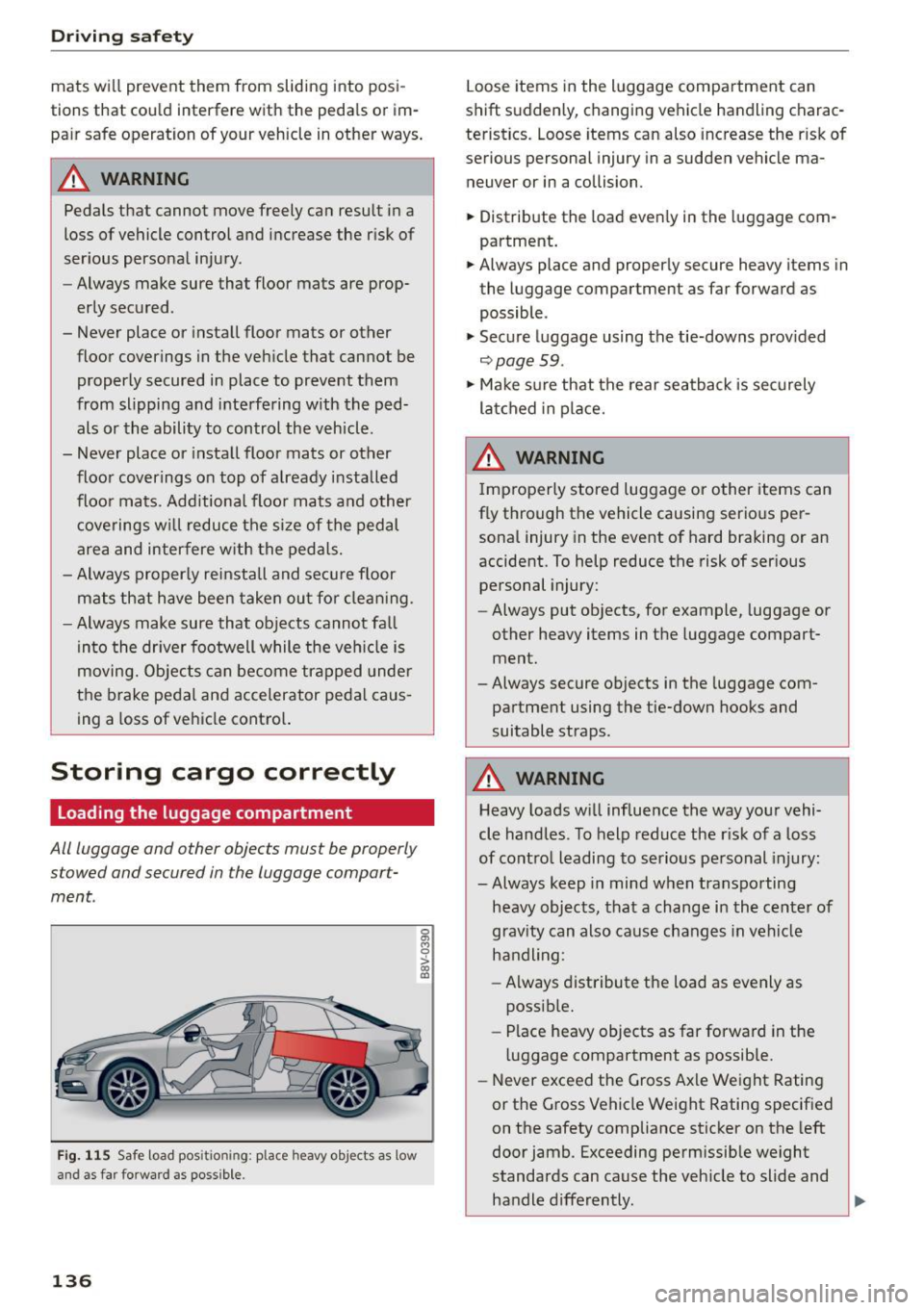
Driving safet y
mats wi ll prevent them from sliding into posi
tions that cou ld interfere with the peda ls or im
pa ir safe operation of your vehicle in other ways .
A WARNING
Pedals that cannot move freely can result in a
loss of vehicle control and increase the risk of
serious persona l injury .
- Always make sure that floor mats are prop
erly secured .
- Never place or insta ll floor mats or other
floor coverings in t he veh icle that cannot be
properly secured in place to prevent them
from slipping and inte rfering w ith the ped
als or the ability to control the veh icle .
- Never place or insta ll floor mats or other
floor coverings on top of already installed
floor mats. Additiona l floo r mats and other
c overings w ill reduce the si ze of the pedal
area and interfere w ith the pedal s.
- Always proper ly reinstall and secu re floor
mats that have been take n ou t for clean ing .
- Always make sure that objects cannot fa ll
in to the dr iver footwell while the veh icle i s
moving. Obje cts can be come trapped unde r
the brake pedal an d accelerator peda l caus
ing a loss of vehicle cont ro l.
Storing cargo correctly
Loading the luggage compartment
All luggage and other objects must be properly
s towed and secured in the luggage compart
ment.
F ig . 11 5 Safe load pos it io nin g: place heavy objects as low
an d a s far for ward as possib le .
136
Loose items in the luggage compa rtment can
shift suddenly, changing vehicle handling charac
teristics. Loose items can also increase the r isk o f
serious persona l injury in a sudden vehicle ma
neuver or in a collision.
.,. Distribute the load even ly in the luggage com
partment.
.,. Always place and properly secure heavy items in
the luggage compartment as far forward as
possible .
.,. Secure luggage using the tie-downs prov ided
~ page 59.
.,. Ma ke s ure that the rear seatback is securely
la tc hed in place.
A WARNING
I mproperly stored luggage or other items can
fly through the vehicle causing serio us per
sona l injury in the event o f hard braking or an
accident. To help reduce the risk of ser ious
personal injury:
- Always put objects, for example, luggage or
other heavy items in the luggage compart
ment.
- Always secure objects in the luggage com
partment using the tie-down hooks and
suitable straps.
A WARNING
H eavy loads wi ll influence the way your vehi
cle handles . To help reduce the r isk of a loss
of contro l leading to se rio us pe rsonal injury:
-Always keep in mind when transpo rting
heavy objects, tha t a change i n the center of
grav ity can also cause changes in vehi cle
h a ndli ng:
- Always distribute the load as evenly as
possib le.
- Place heavy objects as far forward in the
luggage compartment as possib le.
- Never exceed the Gross Axle Weight Rating
or the Gross Vehicle Weight Rating specif ied
on the safety compliance sticker on the left
door jamb. Exceeding permissib le weight
standards can cause the veh icle to slide and
handle d ifferently. ,...
Page 139 of 282
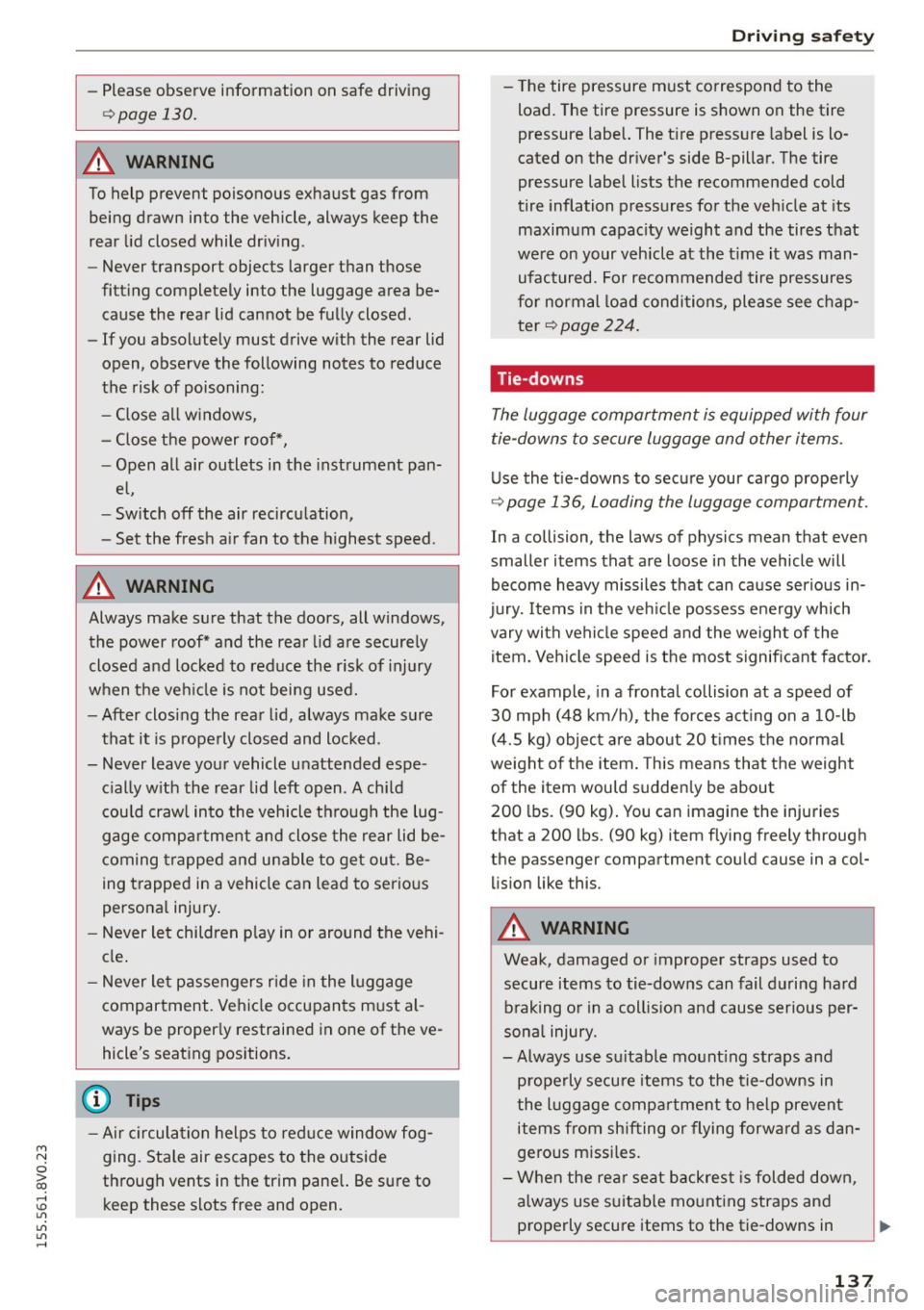
M N
0 > co ..... \!) 1.1"1
1.1"1
1.1"1
.....
-Please observe information on safe driving
~page 130.
A WARNING
To help prevent poisonous exhaust gas from
being drawn into the vehicle, always keep the
rear lid closed while driving .
- Never transport objects larger than those
fitting completely into the luggage area be
cause the rear lid cannot be fully closed.
- If you absolutely must drive with the rear lid
open, observe the following notes to reduce
the risk of poisoning:
- Close all windows,
- Close the power roof*,
- Open all air outlets in the instrument pan-
el,
- Switch off the air recirculation,
- Set the fresh air fan to the highest speed.
A WARNING
Always make sure that the doors, all windows,
the power roof* and the rear lid are securely
closed and locked to reduce the risk of injury
when the vehicle is not being used.
-After closing the rear lid, always make sure
that it is properly closed and locked.
- Never leave your vehicle unattended espe
cially with the rear lid left open . A child
could crawl into the vehicle through the lug
gage compartment and close the rear lid be
coming trapped and unable to get out. Be
ing trapped in a vehicle can lead to serious
personal injury.
- Never let children play in or around the vehi
cle.
- Never let passengers ride in the luggage
compartment. Vehicle occupants must al
ways be properly restrained in one of the ve hicle's seating positions.
(D Tips
- Air circulation helps to reduce window fog
ging. Stale air escapes to the outside
through vents in the trim panel. Be sure to keep these slots free and open.
Driving safety
-The tire pressure must correspond to the
load. The tire pressure is shown on the tire
pressure label. The tire pressure label is lo
cated on the driver's side B-pillar. The tire
pressure label lists the recommended cold
tire inflation pressures for the vehicle at its
maximum capacity weight and the tires that
were on your vehicle at the time it was man ufactured. For recommended tire pressures
for normal load conditions, please see chap
ter ~
page 224.
' Tie-downs
The luggage compartment is equipped with four
tie-downs to secure luggage and other items.
Use the tie-downs to secure your cargo properly
~page 136, Loading the luggage compartment.
In a collision, the laws of physics mean that even
smaller items that are loose in the vehicle will
become heavy missiles that can cause serious in
jury. Items in the vehicle possess energy which
vary with vehicle speed and the weight of the
item. Vehicle speed is the most significant factor.
For example, in a frontal collision at a speed of
30 mph (48 km/h) , the forces acting on a 10-lb
(4.5 kg) object are about 20 times the normal
weight of the item. This means that the weight
of the item would suddenly be about
200 lbs. (90 kg). You can imagine the injuries
that a 200 lbs. (90 kg) item flying freely through
the passenger compartment could cause in a col
lision like this.
A WARNING
-Weak, damaged or improper straps used to
secure items to tie-downs can fail during hard
braking or in a collision and cause serious per
sonal injury .
- Always use suitable mounting straps and
properly secure items to the tie-downs in
the luggage compartment to help prevent
items from shifting or flying forward as dan
gerous missiles.
- When the rear seat backrest is folded down,
always use suitable mounting straps and
properly secure items to the tie-downs in
137
Page 140 of 282
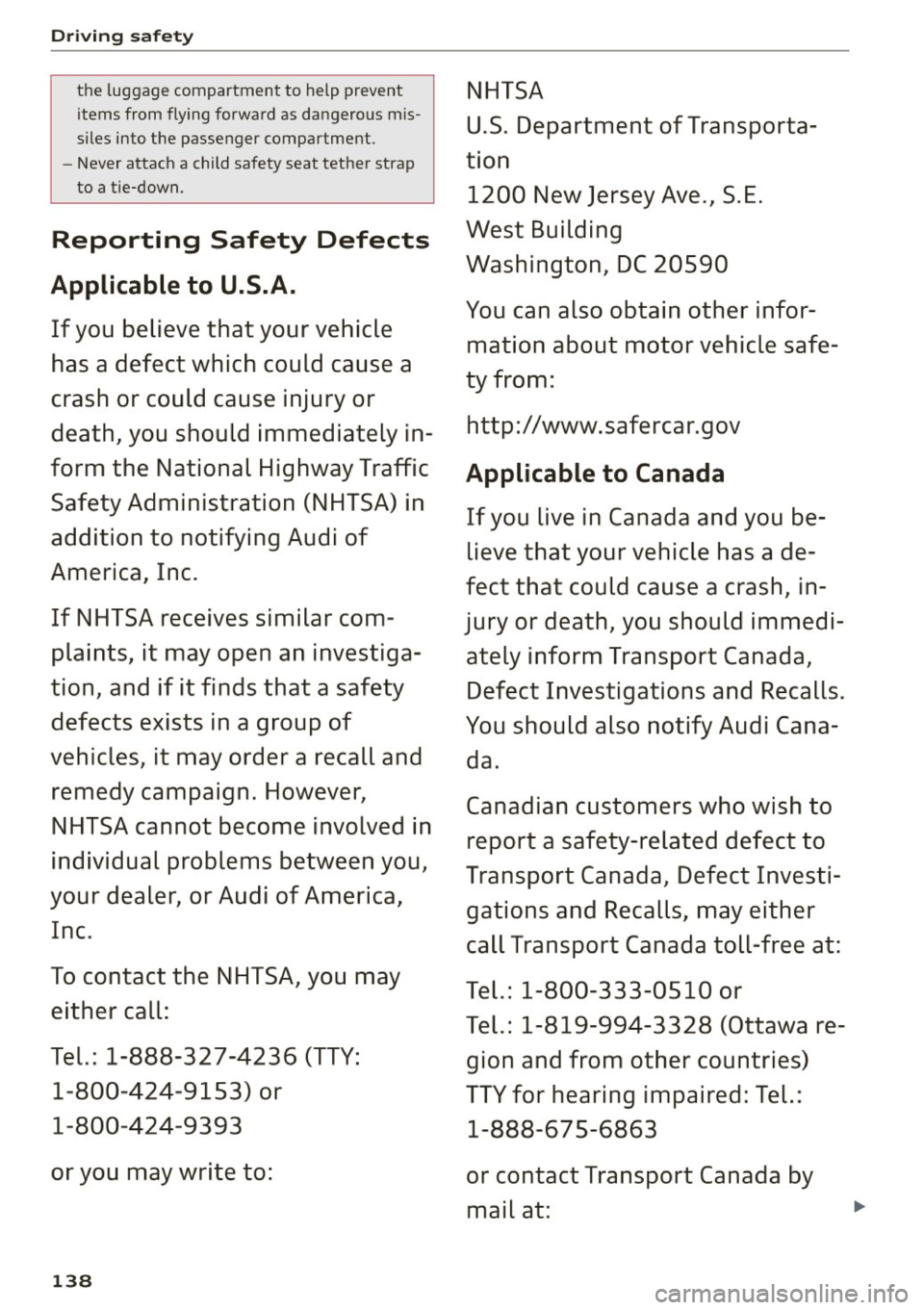
Driving safety
th e luggage compartment to help prevent
items from flying forwa rd as da ngero us mis
siles int o the pass enger compartm ent.
- Ne ver att ach a child safe ty seat t ether stra p
to a ti e-down.
Reporting Safety Defects
Applicable to U.S.A.
If you believe that your vehicle
has a defect which could cause a
crash or could cause injury or
death, you should immediately in
form the National Highway Traffic Safety Administration (NHTSA) in
addition to notifying Audi of
America, Inc.
If NHTSA receives similar com
plaints, it may open an investiga
tion, and if it finds that a safety
defects exists in a group of
vehicles , it may o rder a recall and
remedy campaign. However, NHTSA cannot become involved in
individual problems between you,
your dealer, or Audi of America,
Inc.
To contact the NHTSA, you may either call :
Tel.: 1-888-327-4236 (TTY :
1-800-424-9153) or
1 -800 -424 -9393
or you may write to:
138
NHTSA
U.S . Department of Transporta
tion 1200 New Jersey Ave., S. E.
West Building
Wa shington, DC 20590
You can also obtain other infor mation about motor vehicle safe
ty from:
http://www.safercar.gov
Applicable to Canada
If you live in Canada and you believe that your vehicle has a de
fe ct that could cause a crash , in
jury or death, you should immedi
ately inform Transport Canada,
Defect Investigations and Recalls.
You should also notify Audi Cana
da .
Canadian customers who wish to report a safety-related defect to
Transport Canada , Defect Investi
gations and Recalls, may either
call Transport Canada toll-free at:
T e l.: 1-800-333-0510 or
Tel.: 1-819-994-3328 (Ottawa re
gion and from other countries)
TTY for hearing impaired: Tel. :
1-888-67 5-6863
or contact Transport Canada by mail at:
Page 141 of 282
Transport Canada Motor Vehicle Safety Investiga
tions Laboratory
80 Noel Street
Gatineau, QC
J8Z OA l
For additional road safety infor
mation, please visit the Road
Safety website at:
http://www.tc.gc .ca/eng/
roadsafety/menu.htm
Dr iv ing safety
1 39
Page 142 of 282
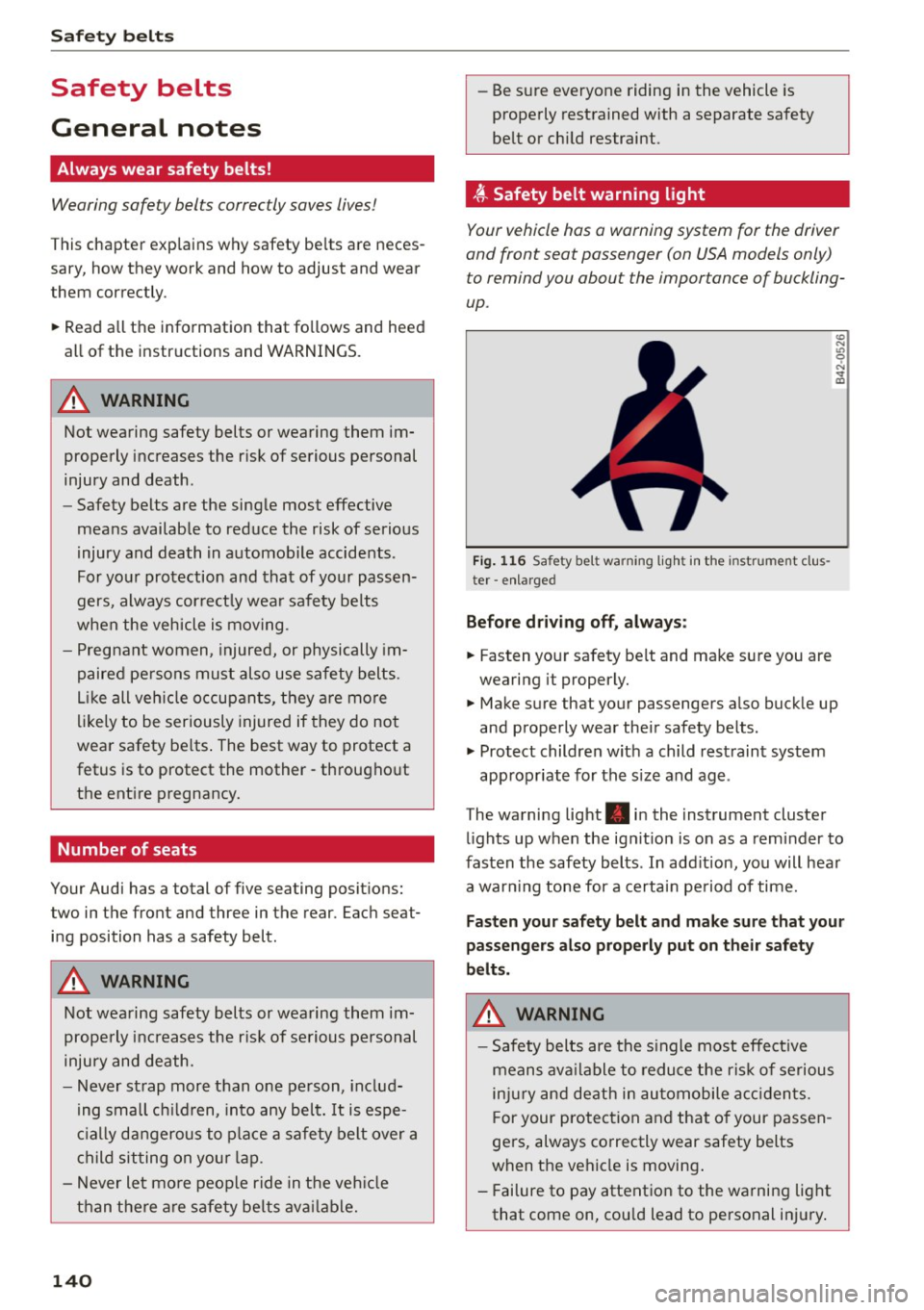
Safety belt s
Safety belts
General notes
Always wear safety belts!
Wearing safety belts correctly saves lives!
This chapter explains why safety belts are neces
sary, how they work and how to adjust and wear
them correctly.
.. Read all the information that follows and heed
all of the instructions and WARNINGS.
&_ WARNING
Not wearing safety belts or wearing them im
properly increases the risk of serious personal
injury and death.
- Safety belts are the single most effective
means available to reduce the risk of serious
injury and death in automobile accidents.
For your protection and that of your passen
gers, always correct ly wear safety belts
when the vehicle is moving.
- Pregnant women, injured, or physically im
paired persons must also use safety belts.
L ik e all veh icle occupants, they are more
likely to be seriously injured if they do not
wear safety be lts . The best way to protect a
fetus is to protect the mother - throughout
the ent ire pregnancy.
Number of seats
Your Audi has a total of five seating positions:
two in the front and three in the rear. Each seat
ing position has a safety belt .
&_ WARNING
Not wearing safety belts or wearing them im
properly increases the risk of serious personal
injury and death.
- Never strap more than one person, includ
ing small ch ildren, into any belt. It is espe
cially dangerous to place a safety belt over a
child sitting on your lap.
- Never let more people ride in the vehicle
than there are safety belts available.
140
-Be sure everyone riding in the vehicle is
properly restrained with a separate safety
belt or child restraint.
~ -Safety belt warning light
Your vehicle has a warning system for the driver
and front seat passenger (on USA models only) to remind you about the importance of buckling
up .
Fig. 116 Safety belt warning light in the instrument cl us
ter -enlarged
Before driving off, always:
.. Fas ten your safety belt and make sure you are
wearing it properly .
(0
"'
"' 9
"'
.. Make sure that your passengers also buckle up
and properly wear their safety belts .
.. Protect children with a child restraint system
appropriate for the s ize and age .
The warning light . in the instrument cluster
light s up when the ign it ion is on as a reminder to
fasten the safety belts . In add ition, you will hear
a warn ing tone for a certain pe riod of time.
Fasten your safety belt and make sure that your
passengers also properly put on their safety
belts .
&_ WARNING
-Safety belts are the sin gle most effect ive
means available to reduce the risk of serious
injury and death in automobile accidents.
F or your protection and that of your passen
gers, always correctly wear safety belts
when the vehicle is moving .
- Failure to pay attention to the warning light
that come on, cou ld lead to personal injury .
-
Page 143 of 282
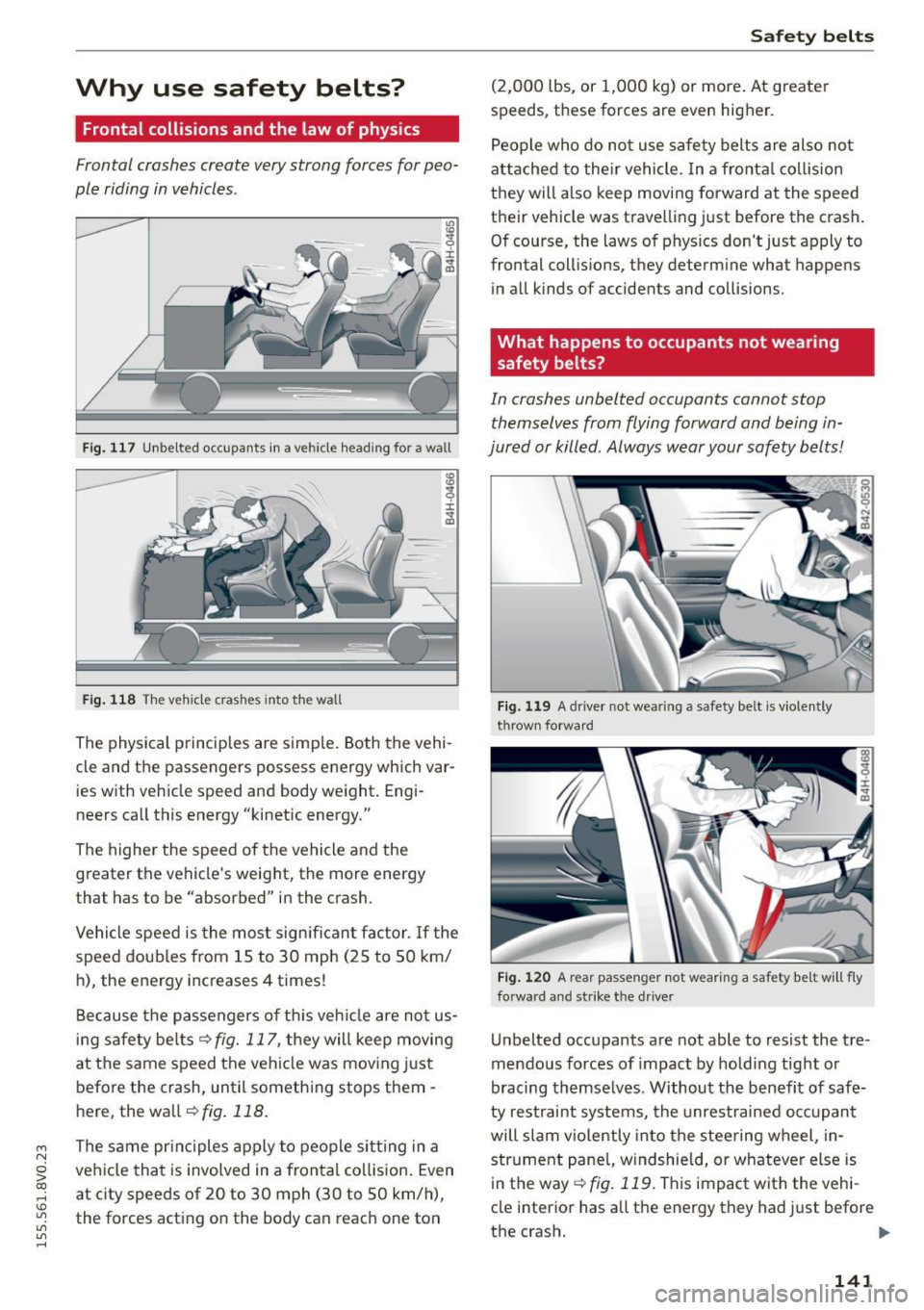
....,
N
0 > co
rl I.O
"'
"'
"'
rl
Why use safety belts?
Frontal collisions and the law of physics
Frontal crashes create very strong forces for peo
ple riding in vehicles .
Fig. 117 Unbelted occupants in a ve hicle heading for a wall
Fig . 118 The vehicle cras hes into th e wall
CD
~ ±
The physical principles are simple. Both the vehi
cle and the passengers possess energy which var ies with vehicle speed and body weight . Engi
neers call this energy "kinetic energy."
The higher the speed of the vehicle and the
greater the vehicle's weight, the more energy
that has to be "absorbed" in the crash.
Vehicle speed is the most significant factor. If the
speed doubles from 15 to 30 mph (25 to 50 km/
h) , the energy increases 4 times!
Because the passengers of this vehicle are not us
ing safety belts
q fig. 117, they will keep moving
at the same speed the vehicle was moving just
before the crash, until something stops them -
here, the wall
qfig. 118 .
The same principles apply to people sitting in a
vehicle that is involved in a frontal collision. Even
at city speeds of 20 to 30 mph (30 to 50 km/h),
the forces acting on the body can reach one ton
Safety belts
(2,000 lbs, or 1,000 kg) or more . At greater
speeds, these forces are even higher .
People who do not use safety belts are also not
attached to their vehicle. In a frontal collision
they will also keep moving forward at the speed
their vehicle was travelling just before the crash.
Of course, the laws of physics don't just apply to
frontal collisions, they determ ine what happens
in all kinds of accidents and collisions.
What happens to occupants not wearing
safety belts?
In crashes unbelted occupants cannot stop themselves from flying forward and being in
jured or killed . Always wear your safety belts!
Fig. 119 A dr iver not wea ring a safety belt is vio lently
thrown forward
Fig. 120 A rear passenger not wearing a sa fety belt w ill fly
fo rward and strike t he drive r
Unbelted occupants are not able to resist the tre
mendous forces of impact by holding tight or
bracing themselves . Without the benefit of safe
ty restraint systems, the unrestrained occupant
will slam v iolently into the steering wheel, in
strument panel, windshie ld, or whatever else is
in the way
q fig . 119 . This impact with the vehi
cle interior has all the energy they had just before
the crash. ..,_
141
Page 144 of 282
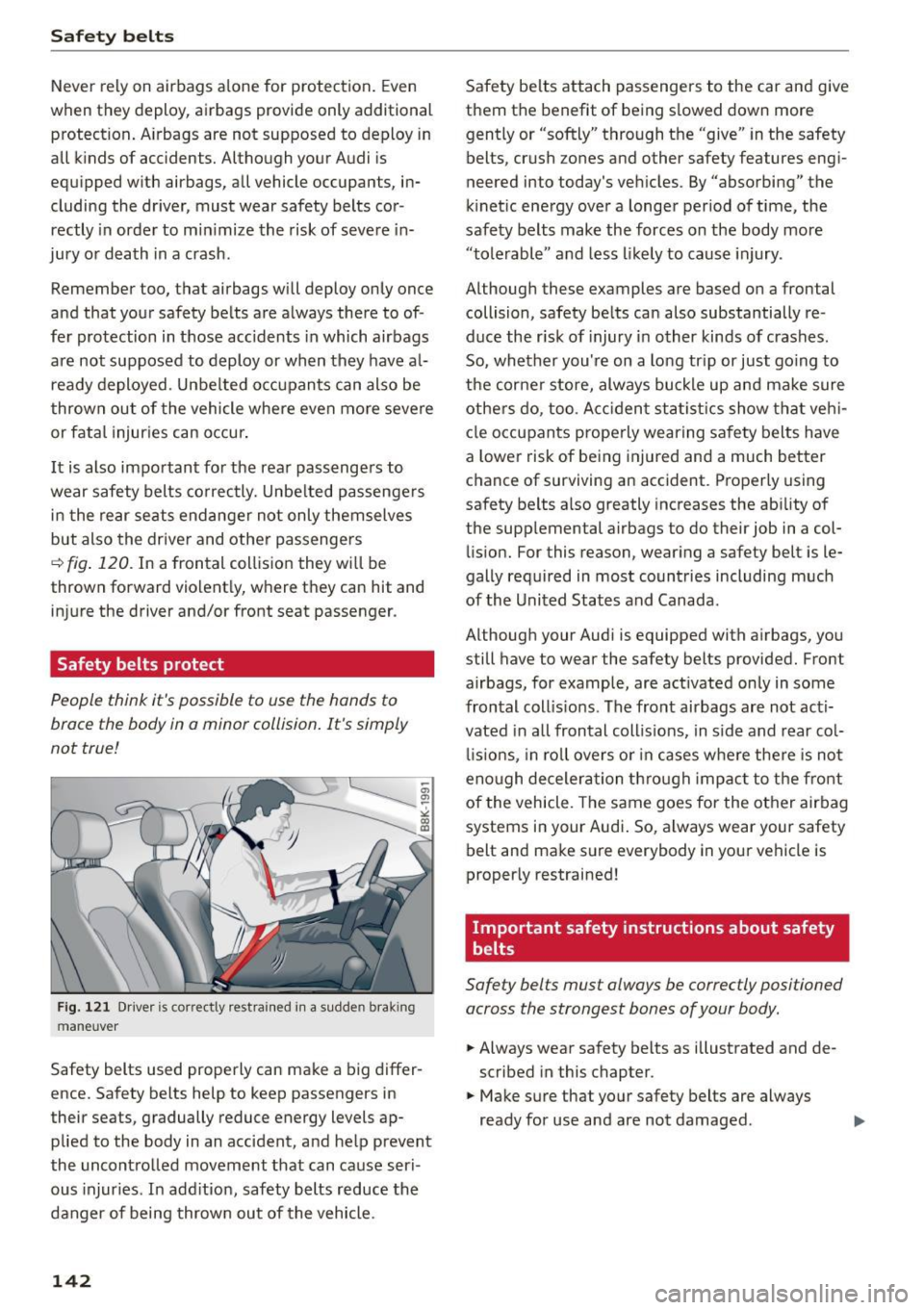
Safety belts
Never rely on airbags a lone for protection . Even
when they deploy, airbags provide only additional
protection . A irbags are not supposed to deploy in
all kinds of accidents. Although your Audi is
equipped w ith airbags, all vehicle occupants, in
cluding the driver, must wear safety belts cor
rectly in orde r to min imize the risk of seve re in
jury o r death in a crash .
Remember too, that airbags will deploy only once
and that your safety be lts are a lways there to of
fer protection in t hose accidents in which airbags
are not supposed to deploy or when they have a l
ready deployed . Unbelted o ccupan ts can also be
thrown ou t of the vehicle where even mo re severe
or fata l injur ies can occur .
It is also important fo r the rea r passenge rs to
wear safety belts co rrectly. Unbe lted passenge rs
i n t he rear se ats endanger not only themselves
but also the driver and other passengers
~ fig . 120. In a frontal coll ision they wi ll be
thrown forward violent ly, where they can hit and
in ju re the driver and/or front seat passenger.
Safety belts protect
People think it's possible to use the hands to
brace the body in a minor collision . It 's simply
not true!
F ig . 121 Driver is correct ly restra ined i n a sudden b rak ing
m aneuver
Safety belts used properly can make a big differ
ence. Safety belts help to keep passengers in
their seats , gradually reduce energy levels ap
plied to the body in an accident, and he lp prevent
the uncont ro lled movement that can cause seri
ous injur ies. In add it ion, safety belts reduce the
danger of being throw n ou t of the vehicle.
142
Safety be lts attach passengers to the car and give
them the benefit of being s lowed down more
gently or "softly" through the "give" in the safety
belts, crush zones and other safety features eng i
neered into today's veh icles. By "absorbing" the
ki net ic ene rgy over a longer period of time, the
safety be lts make the forces on the body more
"tole rable" and less li kely to cause injury .
Although these examples are based o n a frontal
collision, safety be lts can also substantially re
duce the r isk o f injury in other kinds o f crashes.
So, whether you're on a long tr ip or just go ing to
t he cor ne r store, always bu ckle up and ma ke sure
o thers do, too. Ac ciden t sta tis tics show that ve hi
cle occupants properly wearing sa fe ty belts have
a lowe r risk of be ing injured and a much better
chance of surviving an accident. Pro perly using
safety belts a lso greatly increases the ab ility of
the supp lemental airbags to do their job in a col
li sion. For this reason, wear ing a safety be lt is le
gally required in most countries including much
of the United States and Canada .
Although your Audi is equipped with a irbags, you
still have to wear the safety belts provided. Front airbags, for example, are act ivated only in some
fron tal coll is io ns . The front airbags are not act i
vated in a ll frontal col lisions, in s ide and rear co l
li sio ns, in ro ll overs o r in cases whe re the re is not
eno ugh deceler ation th rough impac t to the front
of the vehicle . T he same goes for the other airbag
systems in your Audi. So, always wear your safety
belt and make sure everybody in your vehicle is
proper ly restrained!
Important safety instructions about safety
belts
Safety belts must always be correctly positioned
across the strongest bones of your body .
.,. Always wear safety belts as illustrated and de
scribed in this chapter .
.,. Make s ure that your safety belts are always
ready fo r use and are not damaged .
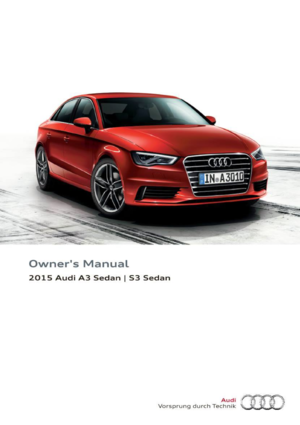 1
1 2
2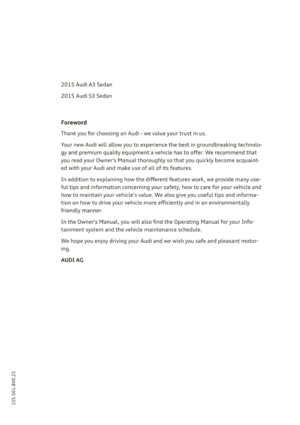 3
3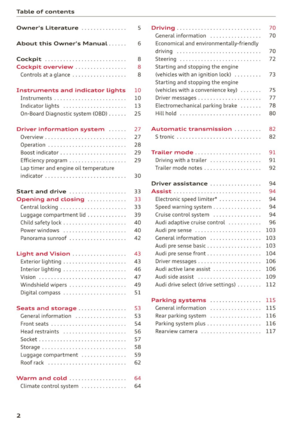 4
4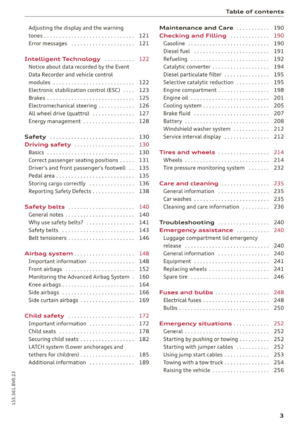 5
5 6
6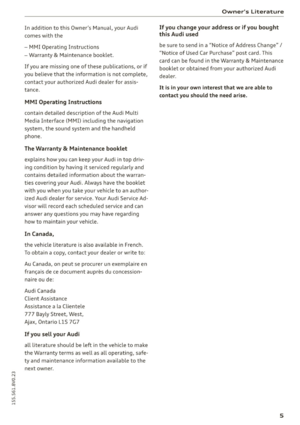 7
7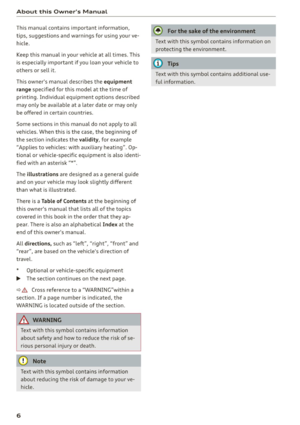 8
8 9
9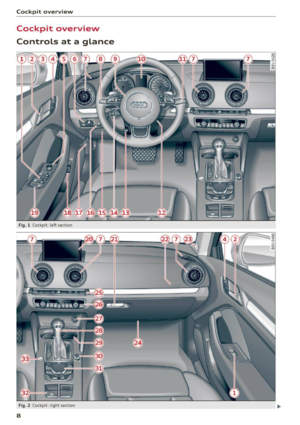 10
10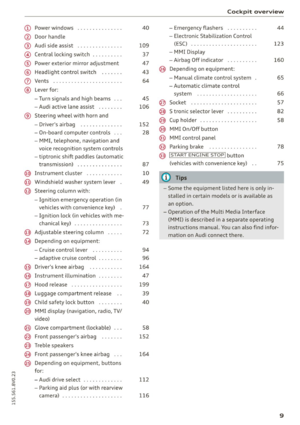 11
11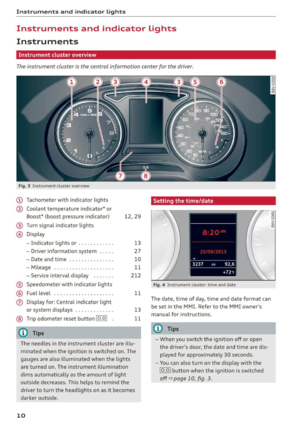 12
12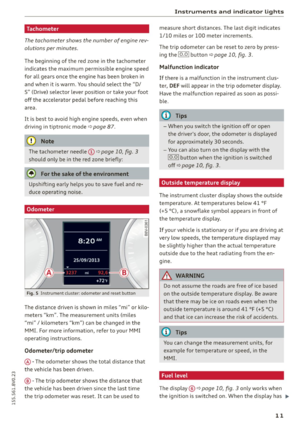 13
13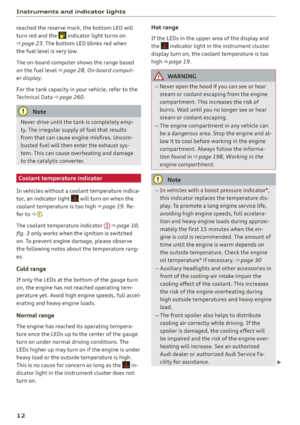 14
14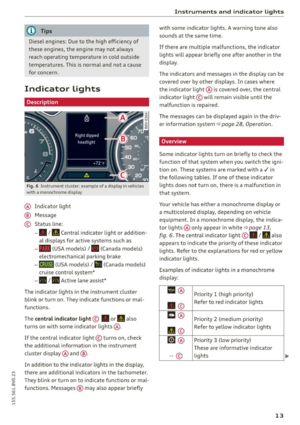 15
15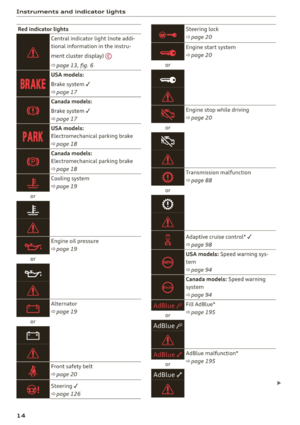 16
16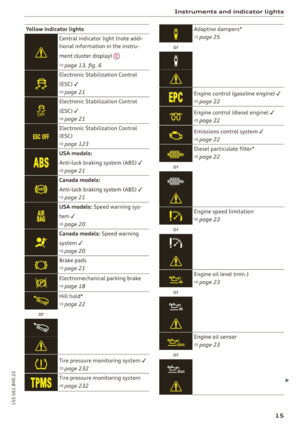 17
17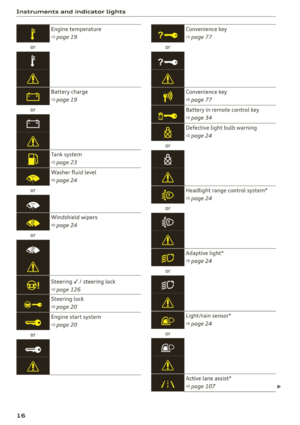 18
18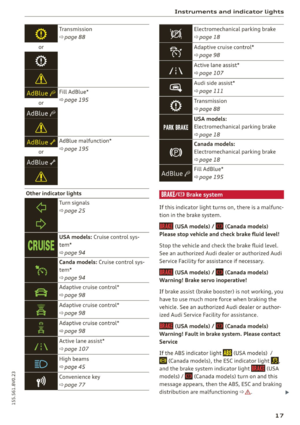 19
19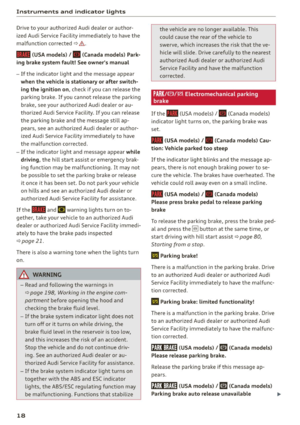 20
20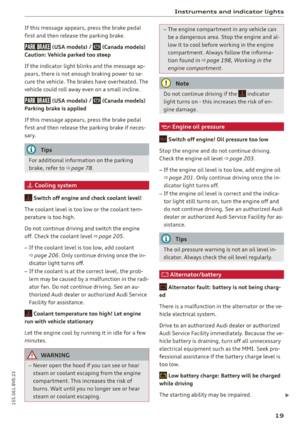 21
21 22
22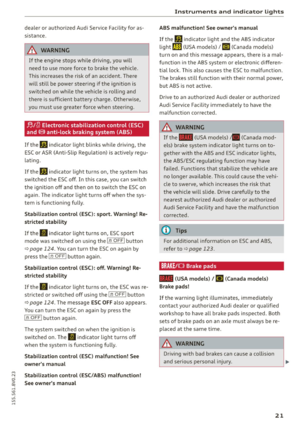 23
23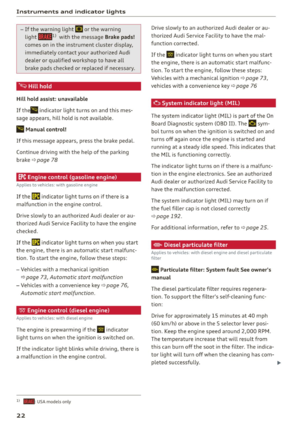 24
24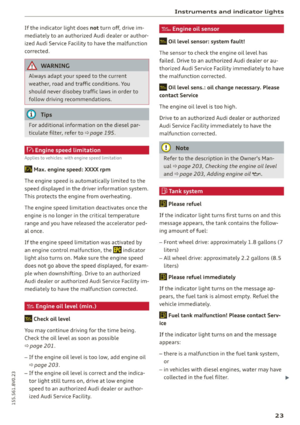 25
25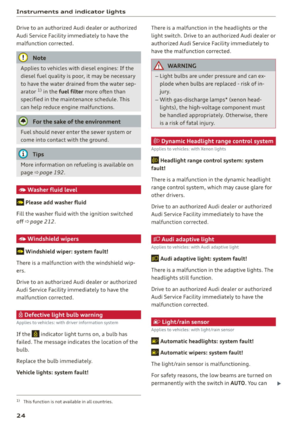 26
26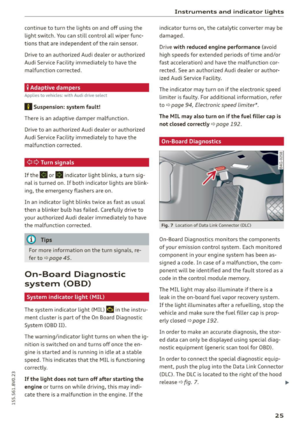 27
27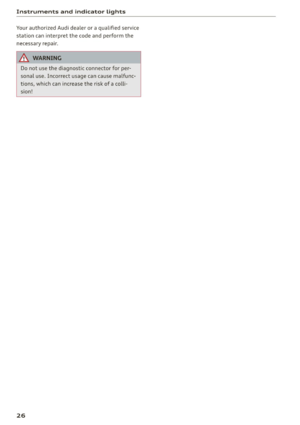 28
28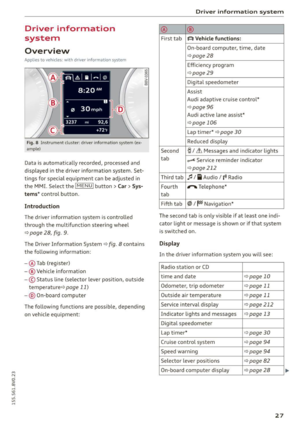 29
29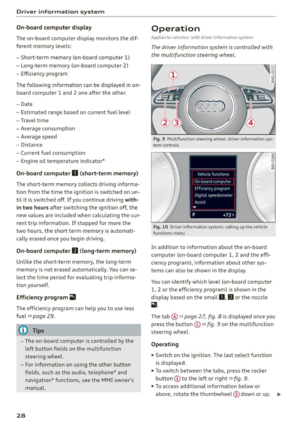 30
30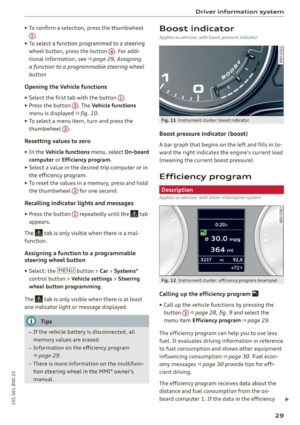 31
31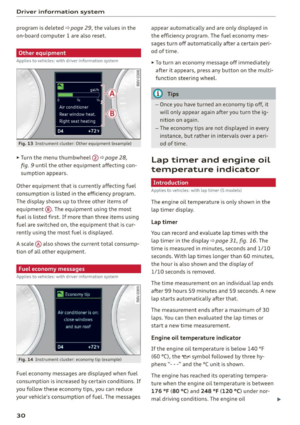 32
32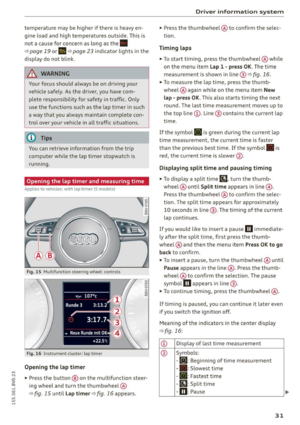 33
33 34
34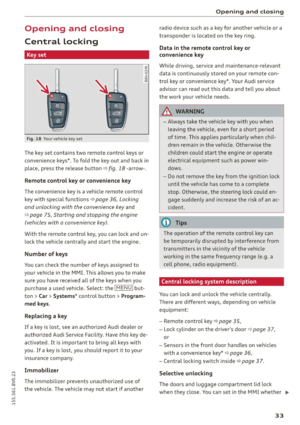 35
35 36
36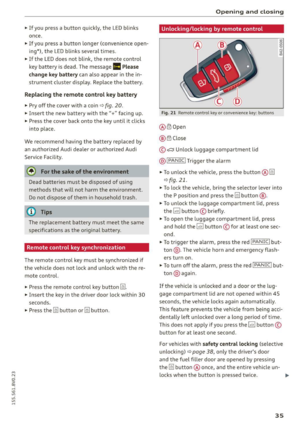 37
37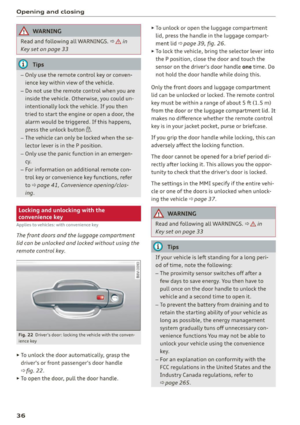 38
38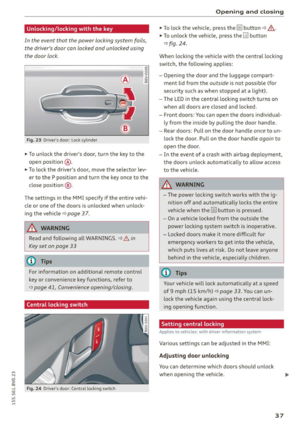 39
39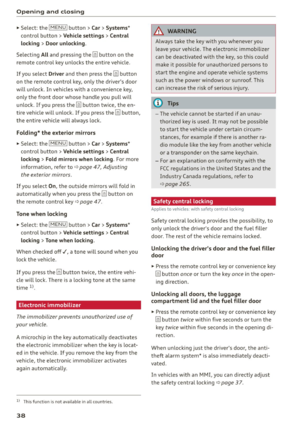 40
40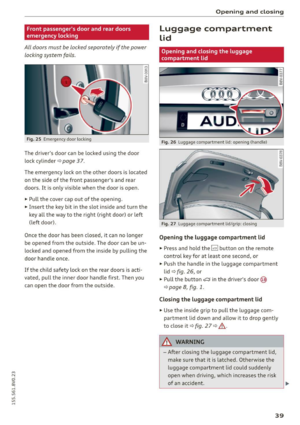 41
41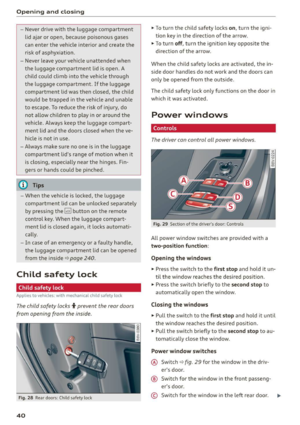 42
42 43
43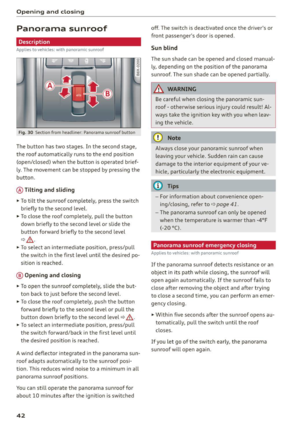 44
44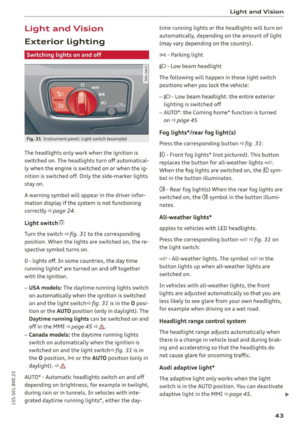 45
45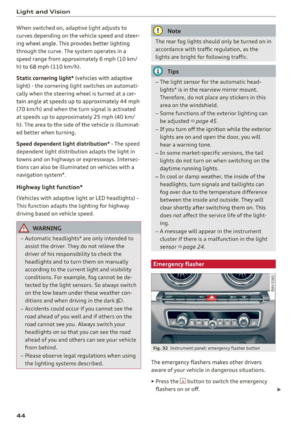 46
46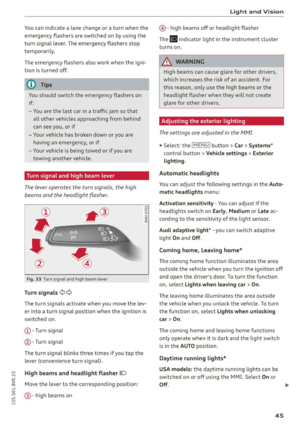 47
47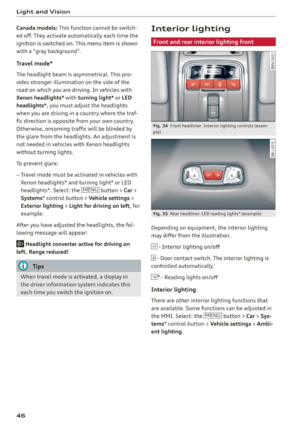 48
48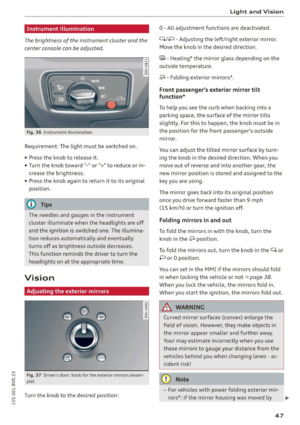 49
49 50
50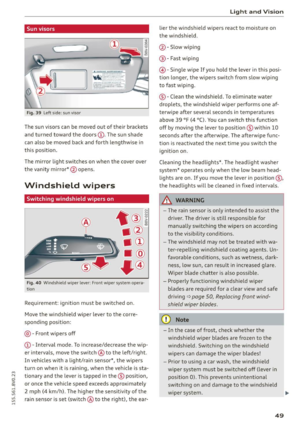 51
51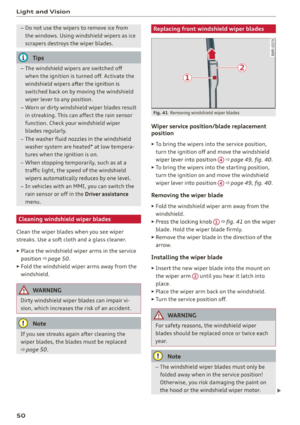 52
52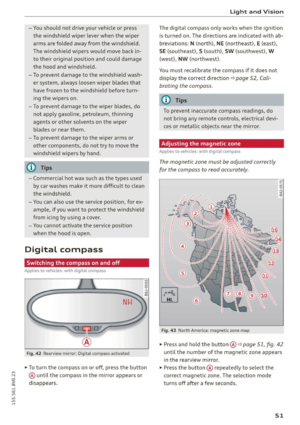 53
53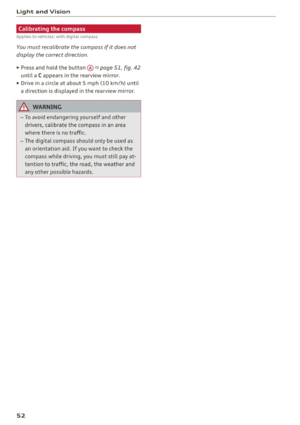 54
54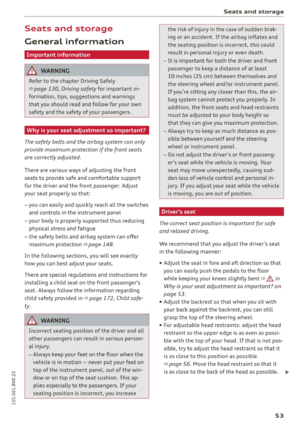 55
55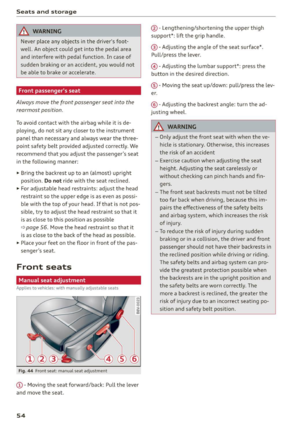 56
56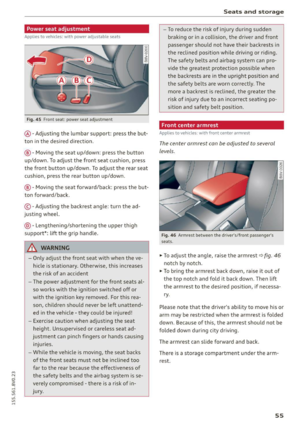 57
57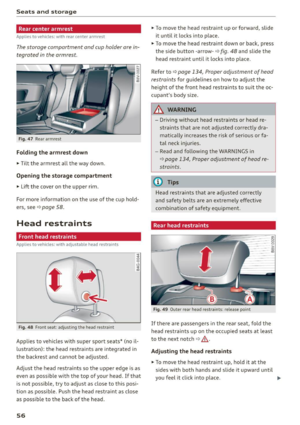 58
58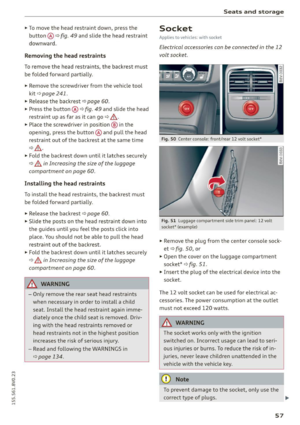 59
59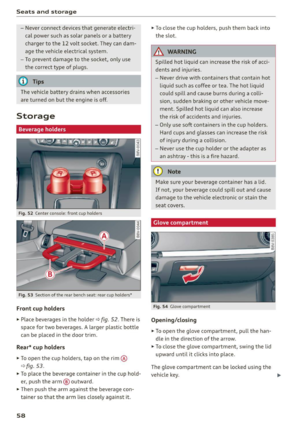 60
60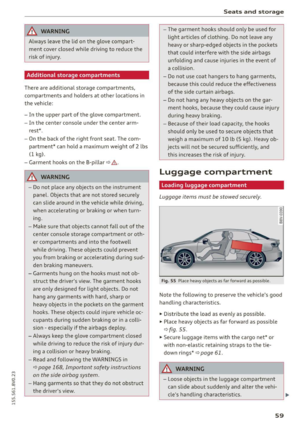 61
61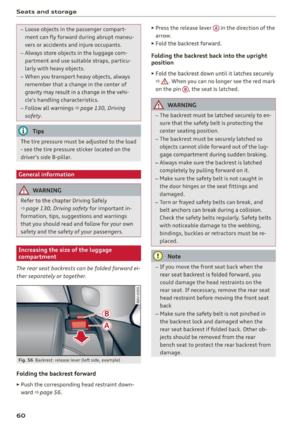 62
62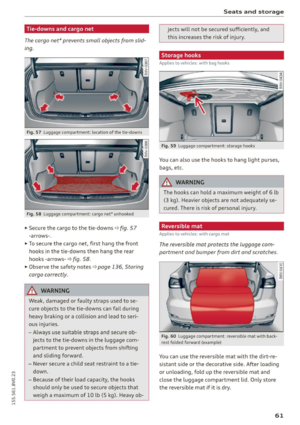 63
63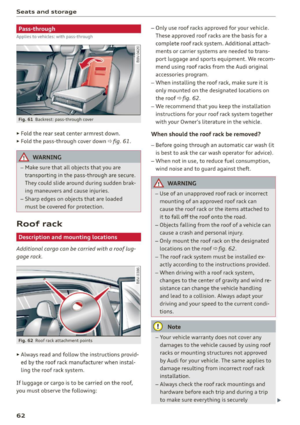 64
64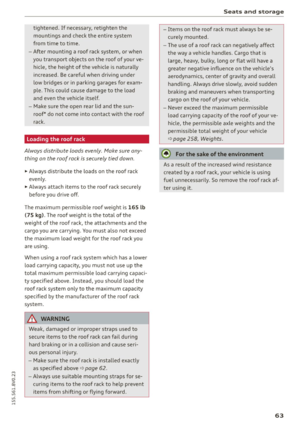 65
65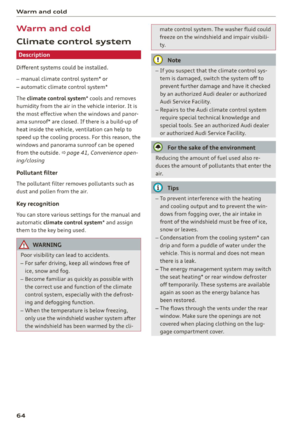 66
66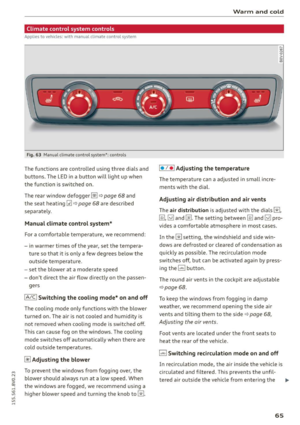 67
67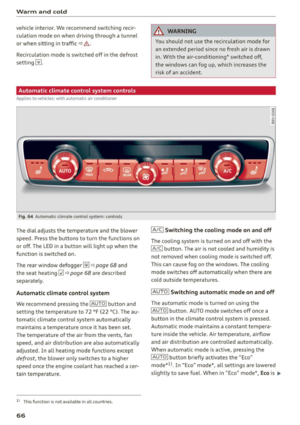 68
68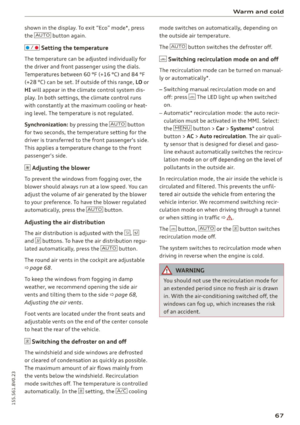 69
69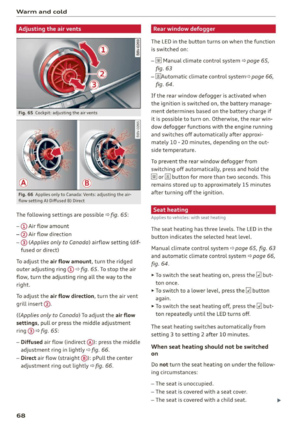 70
70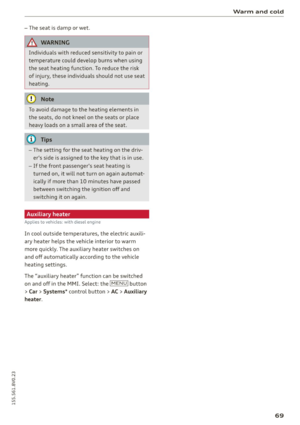 71
71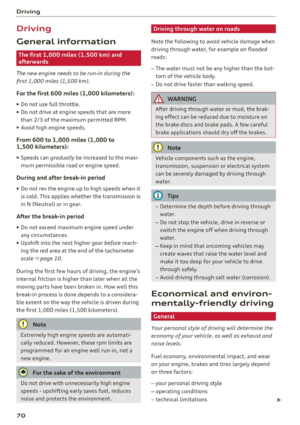 72
72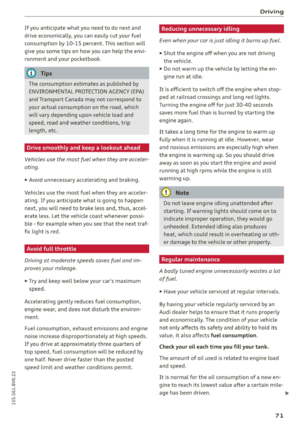 73
73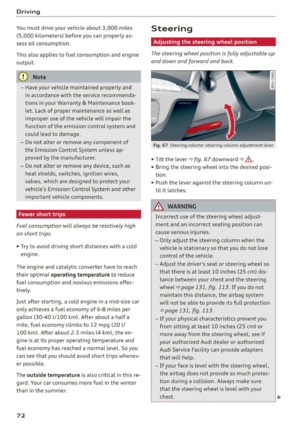 74
74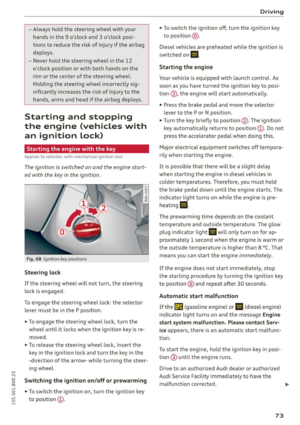 75
75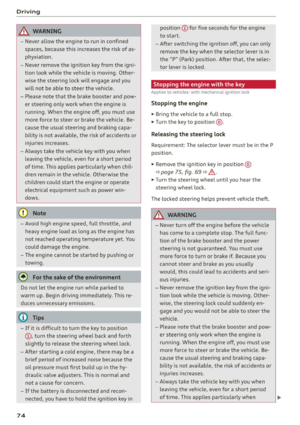 76
76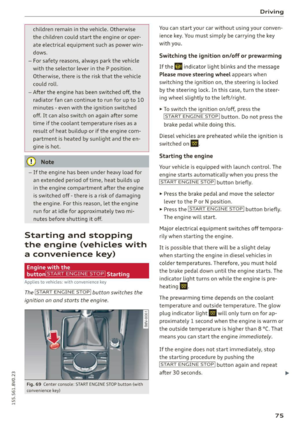 77
77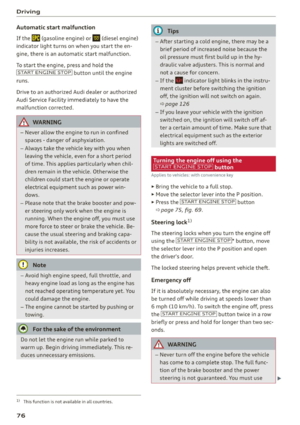 78
78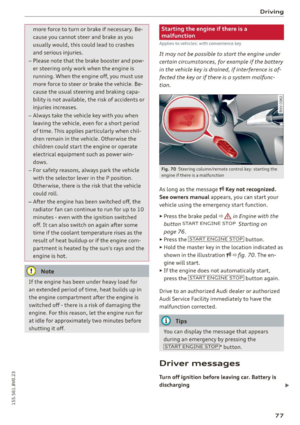 79
79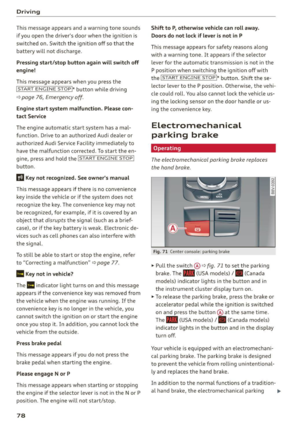 80
80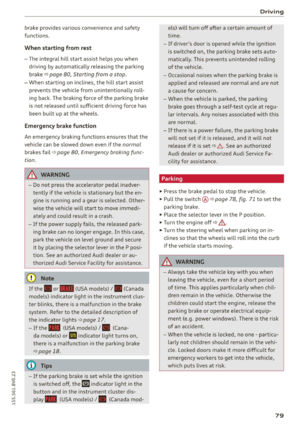 81
81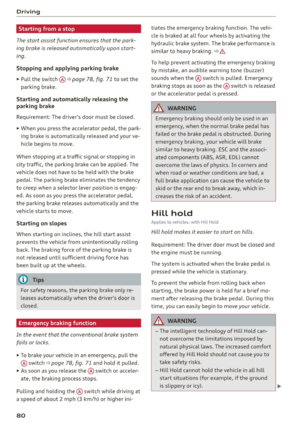 82
82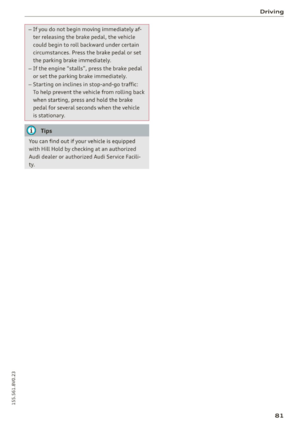 83
83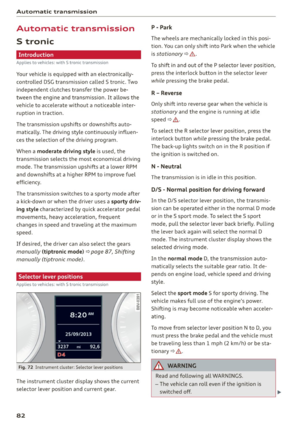 84
84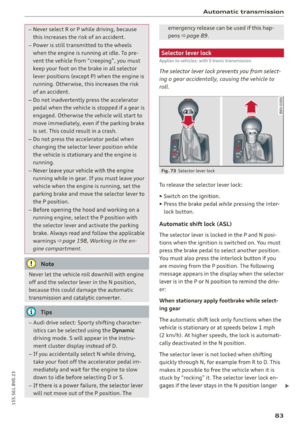 85
85 86
86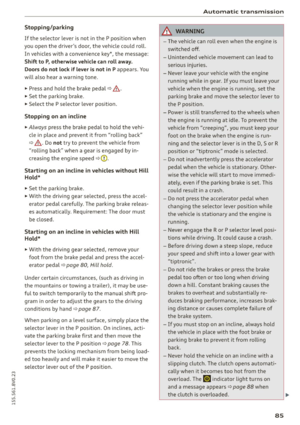 87
87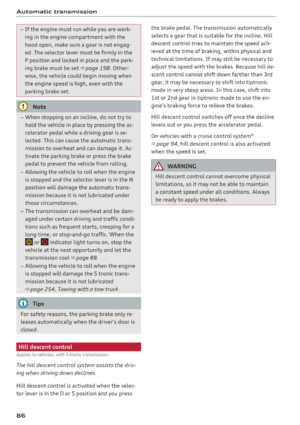 88
88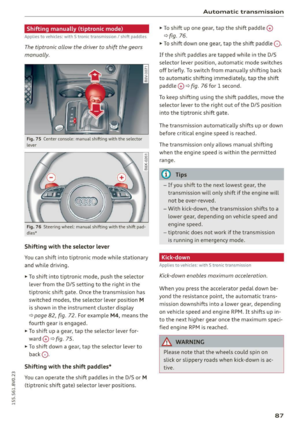 89
89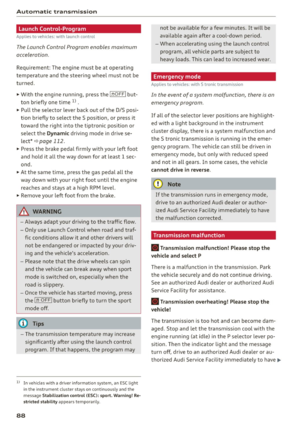 90
90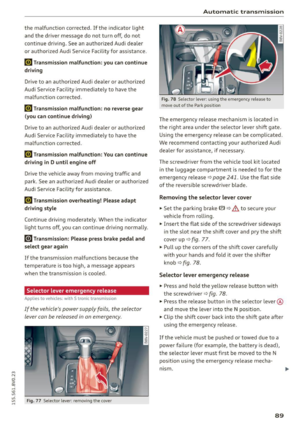 91
91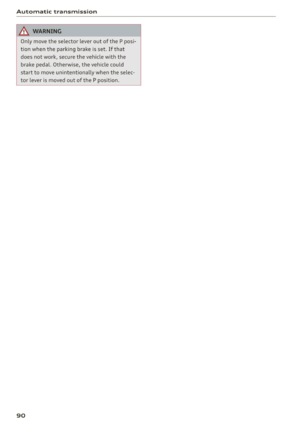 92
92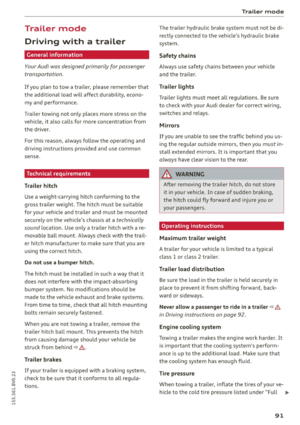 93
93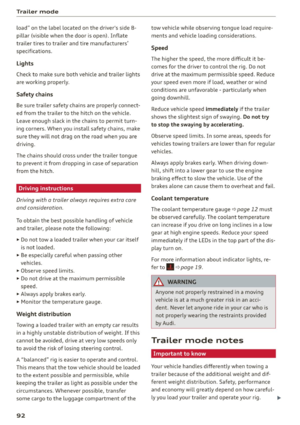 94
94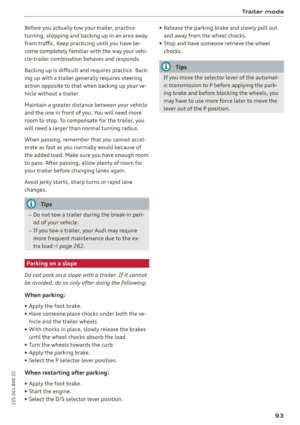 95
95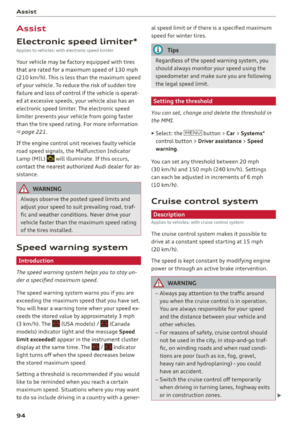 96
96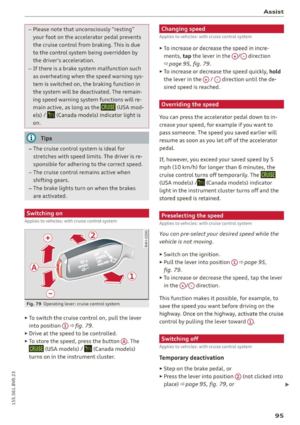 97
97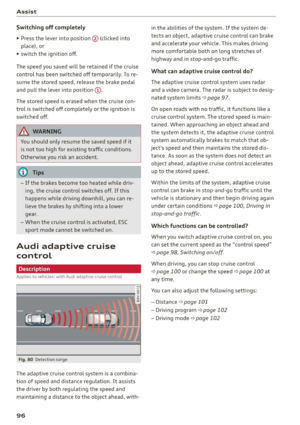 98
98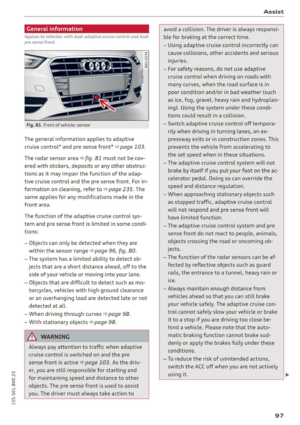 99
99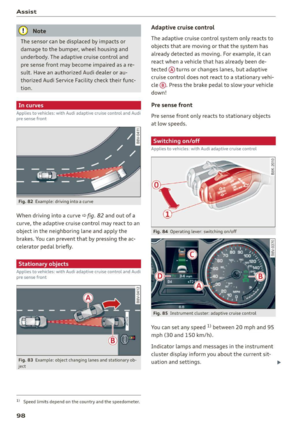 100
100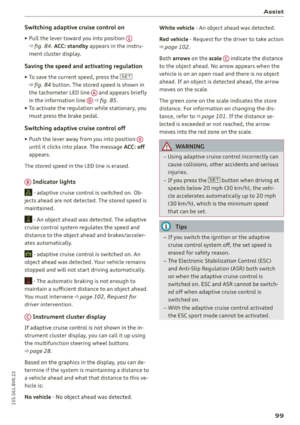 101
101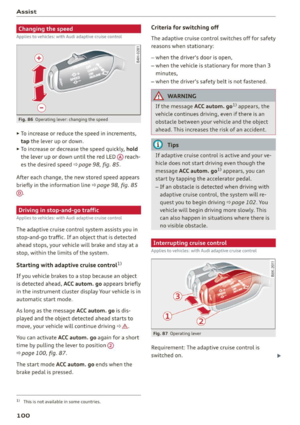 102
102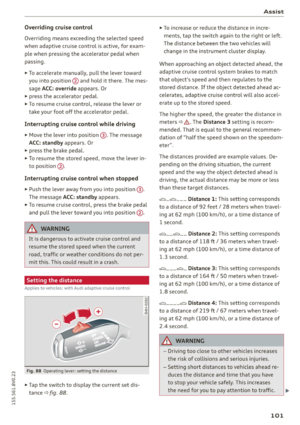 103
103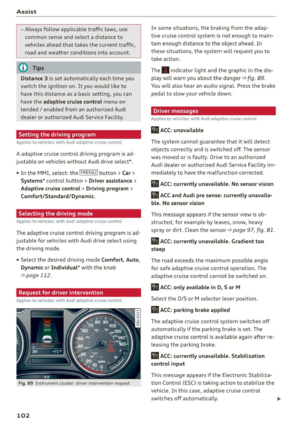 104
104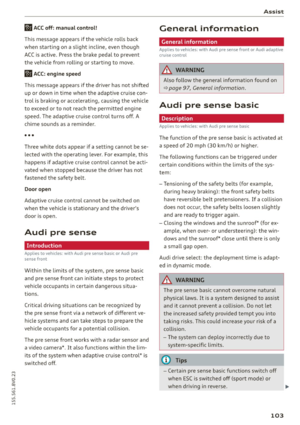 105
105 106
106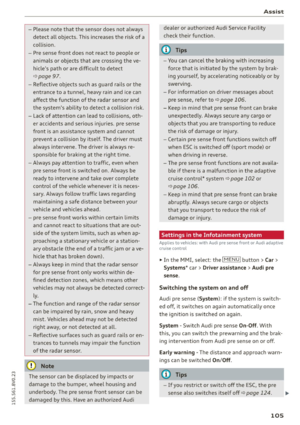 107
107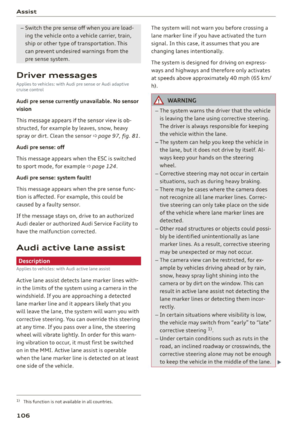 108
108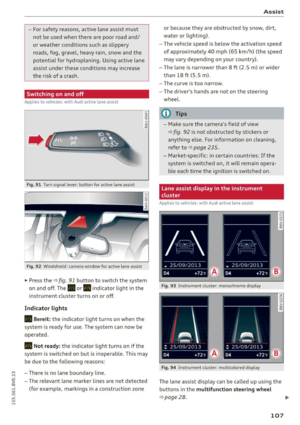 109
109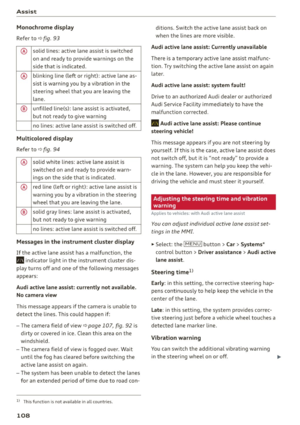 110
110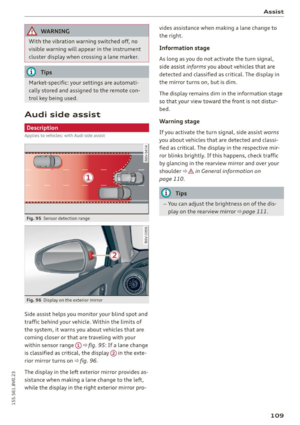 111
111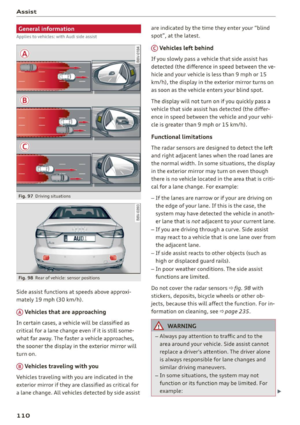 112
112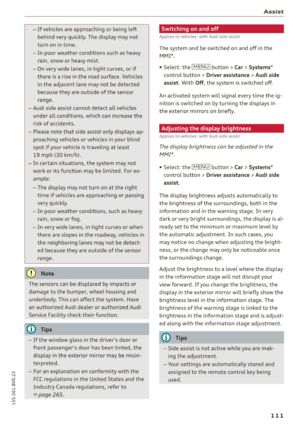 113
113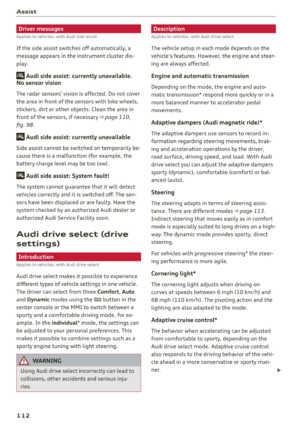 114
114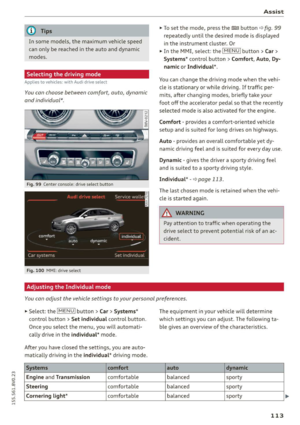 115
115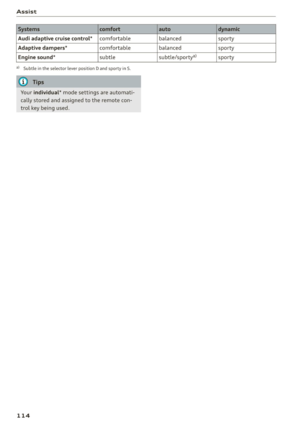 116
116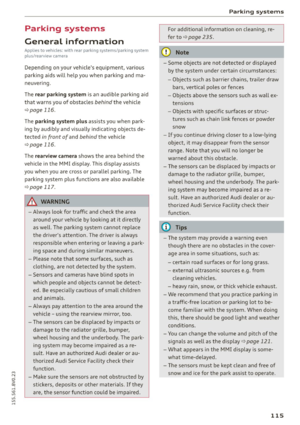 117
117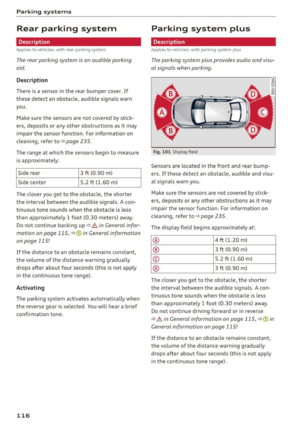 118
118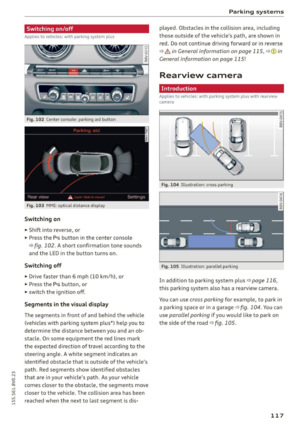 119
119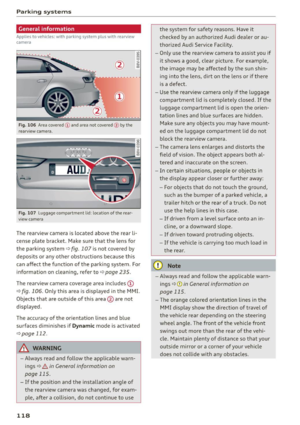 120
120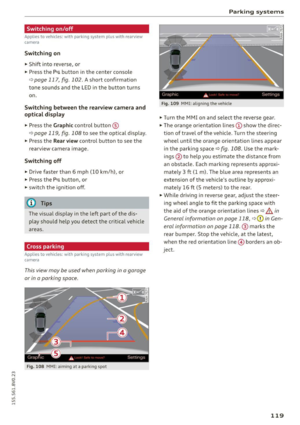 121
121 122
122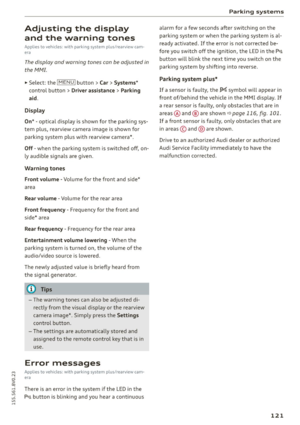 123
123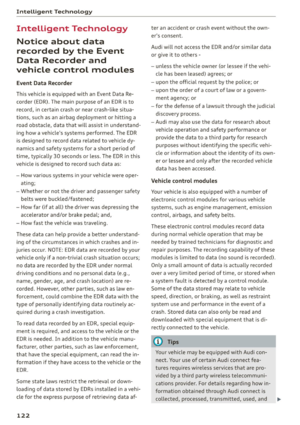 124
124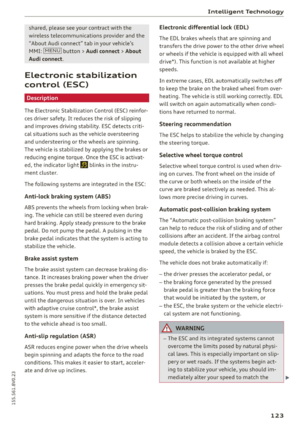 125
125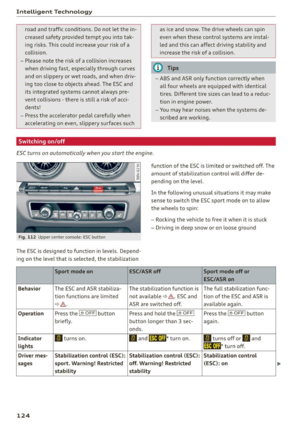 126
126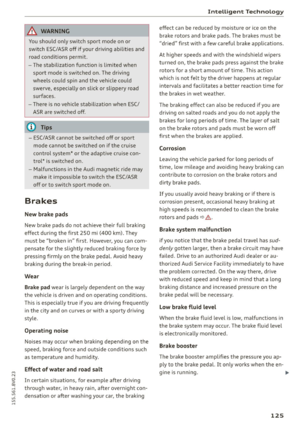 127
127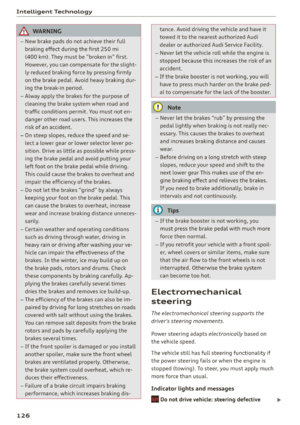 128
128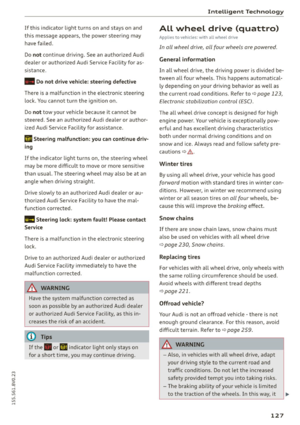 129
129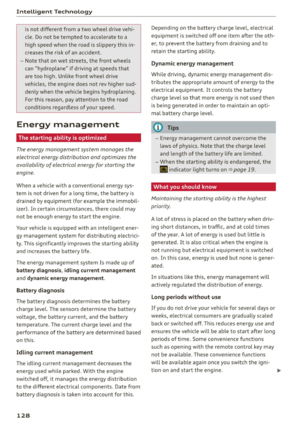 130
130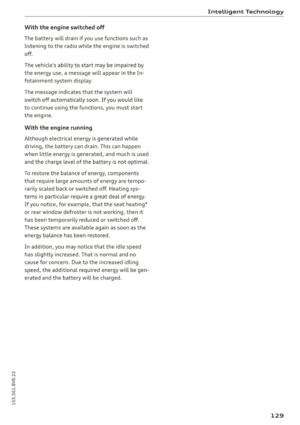 131
131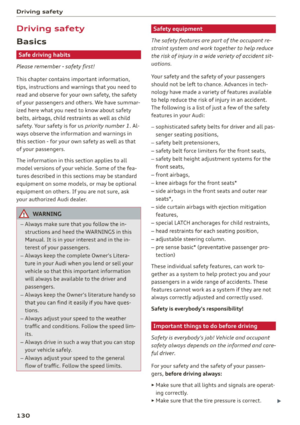 132
132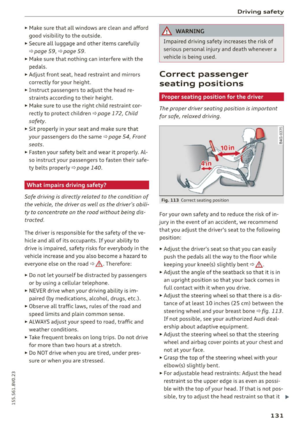 133
133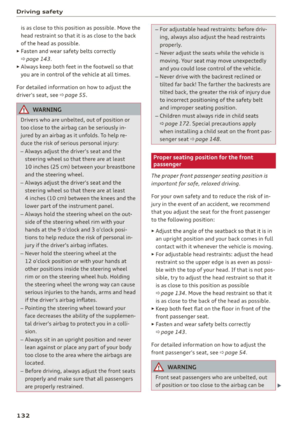 134
134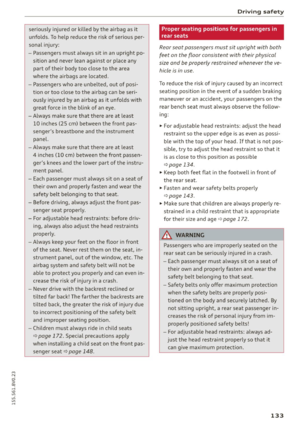 135
135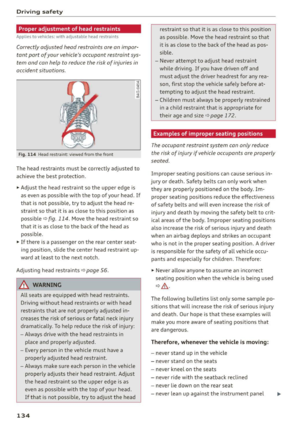 136
136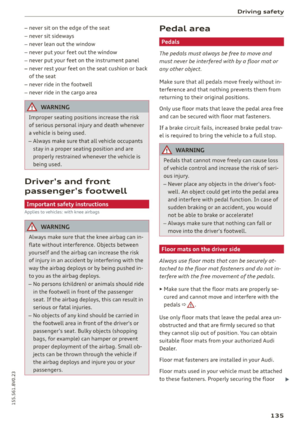 137
137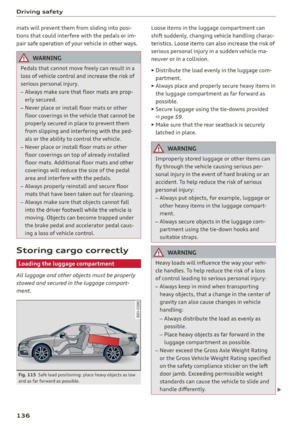 138
138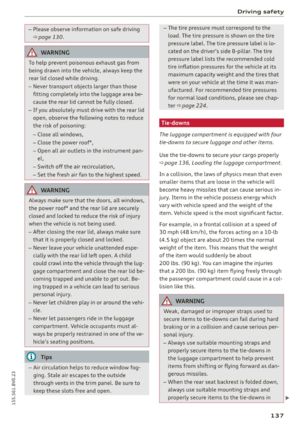 139
139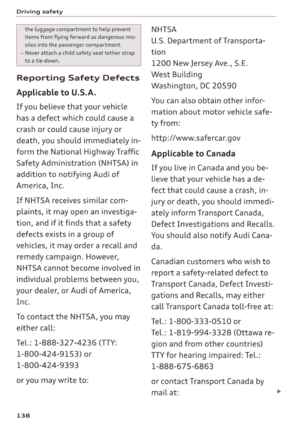 140
140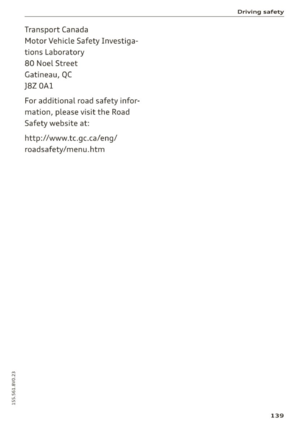 141
141 142
142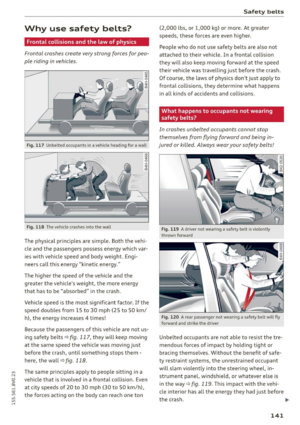 143
143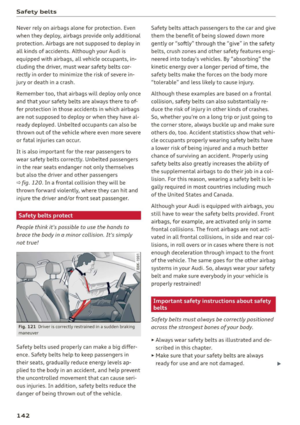 144
144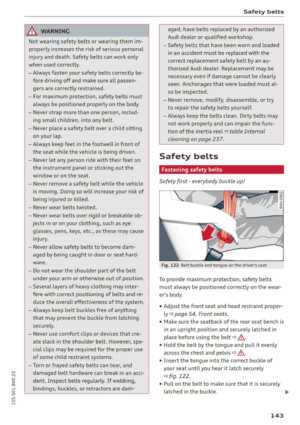 145
145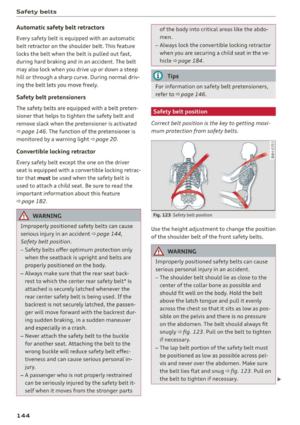 146
146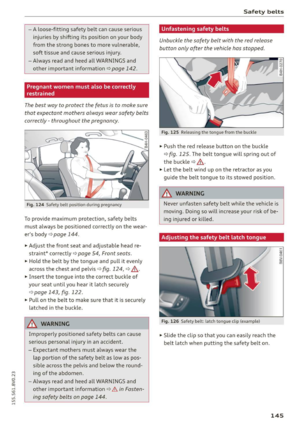 147
147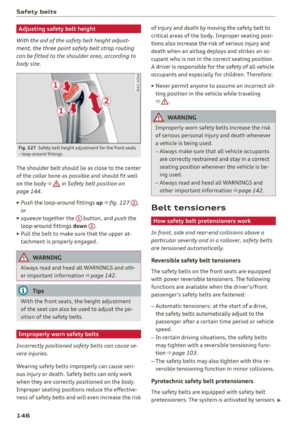 148
148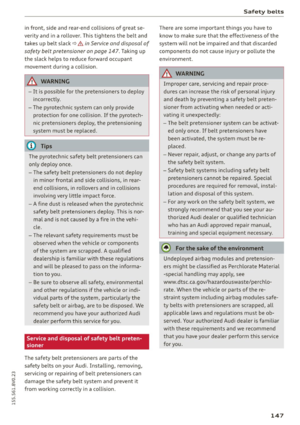 149
149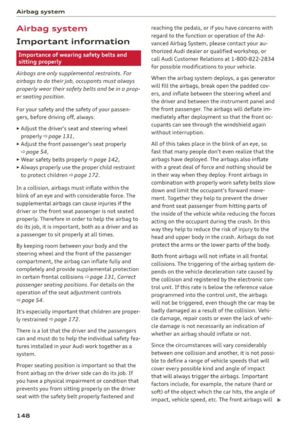 150
150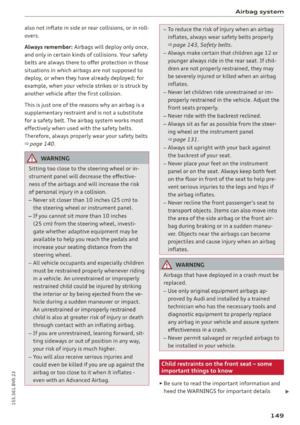 151
151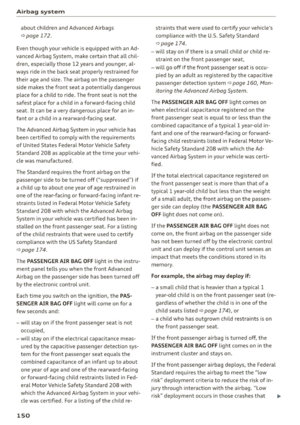 152
152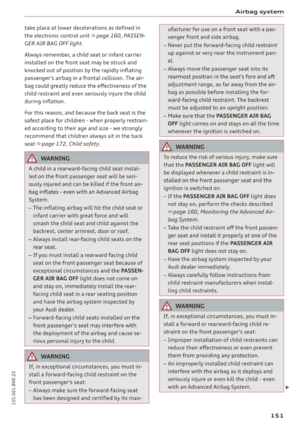 153
153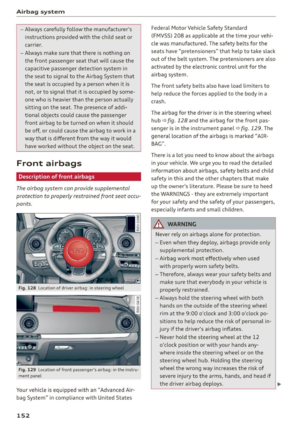 154
154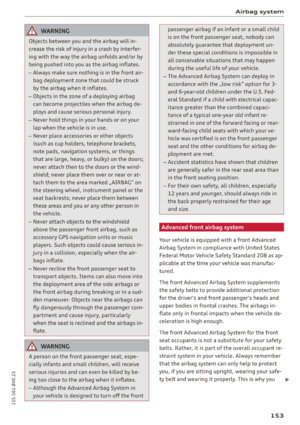 155
155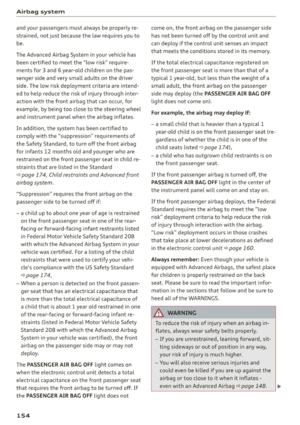 156
156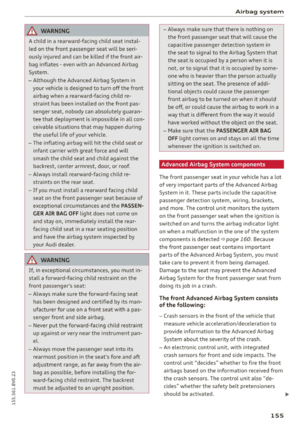 157
157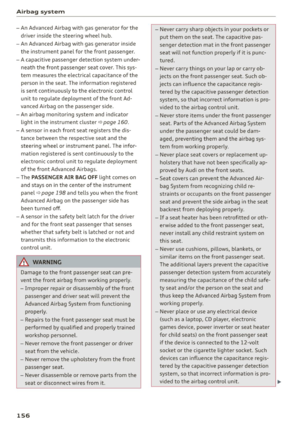 158
158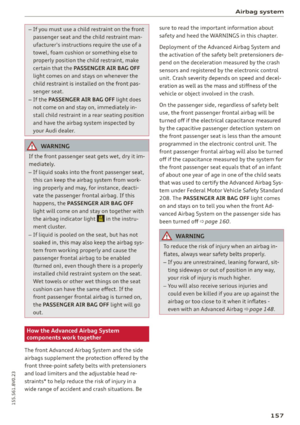 159
159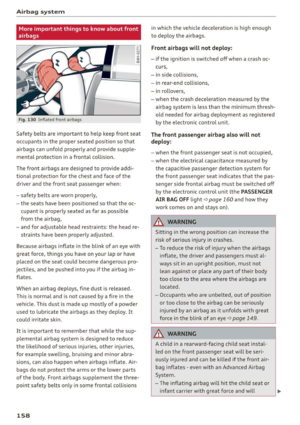 160
160 161
161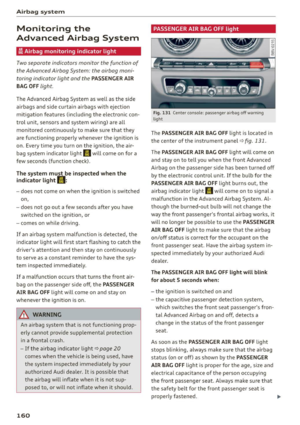 162
162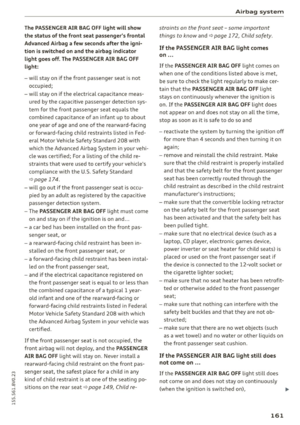 163
163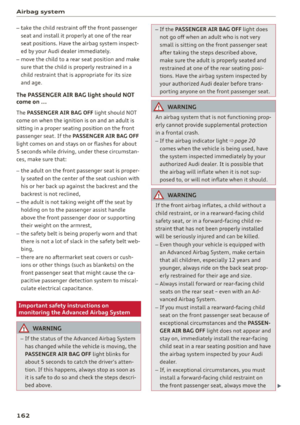 164
164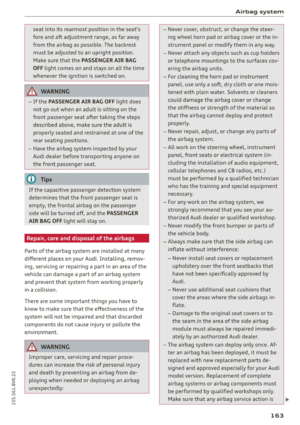 165
165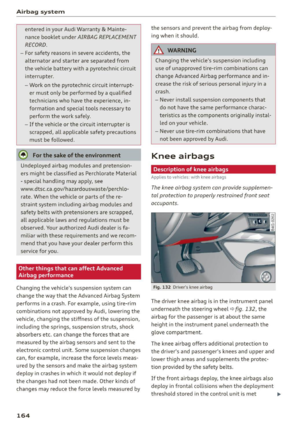 166
166 167
167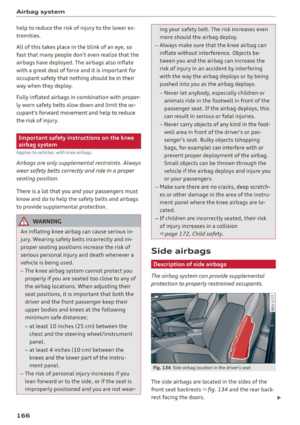 168
168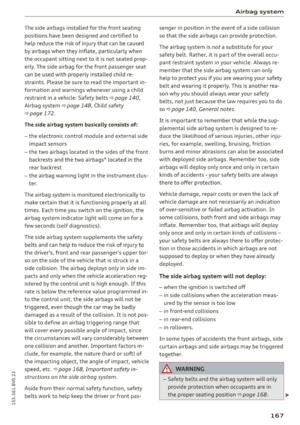 169
169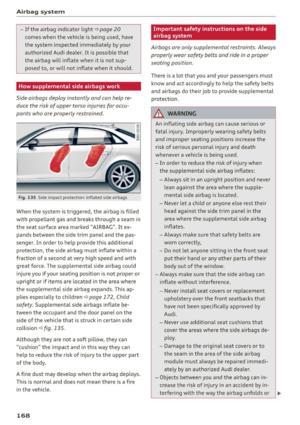 170
170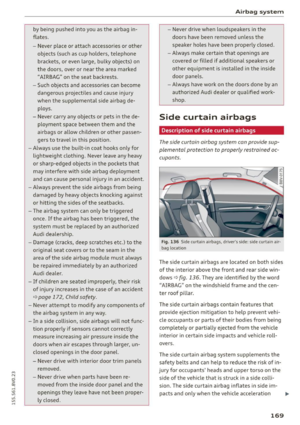 171
171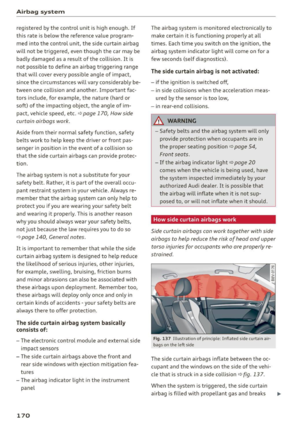 172
172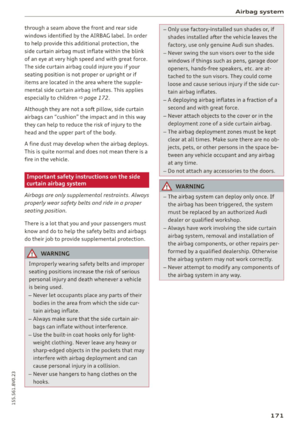 173
173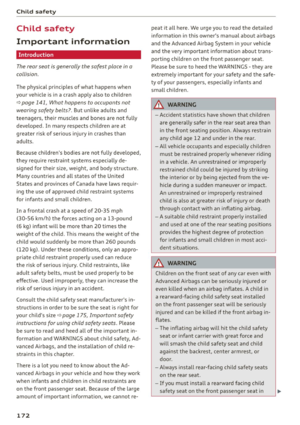 174
174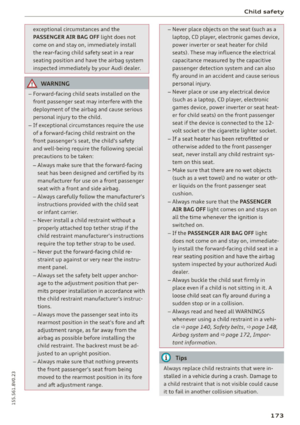 175
175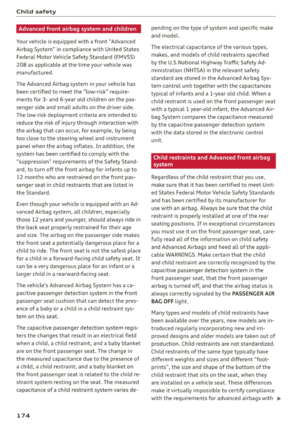 176
176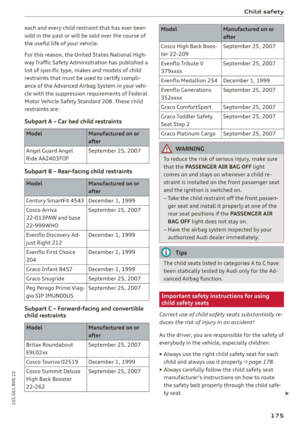 177
177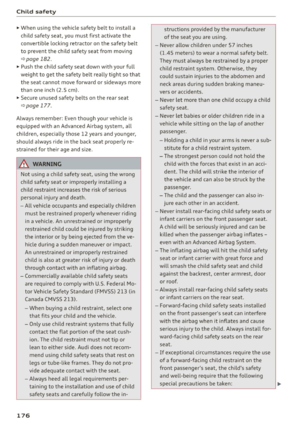 178
178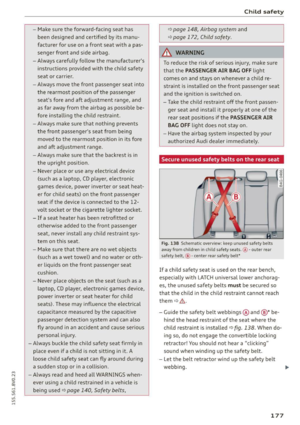 179
179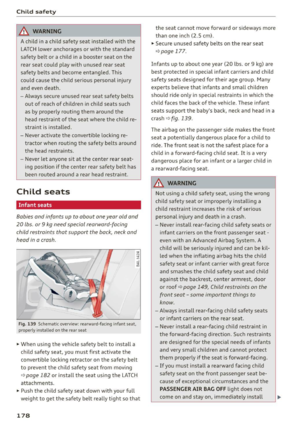 180
180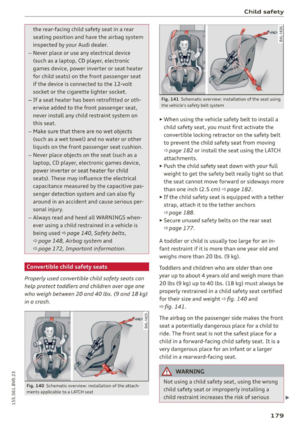 181
181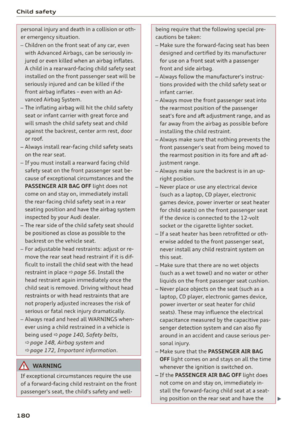 182
182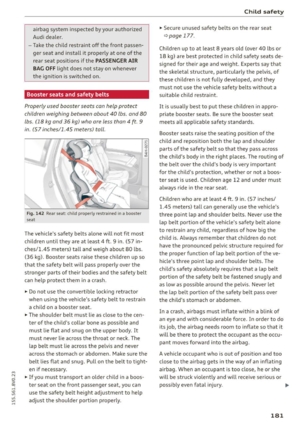 183
183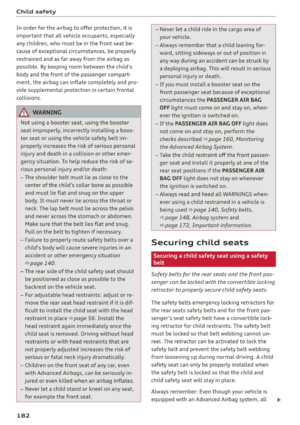 184
184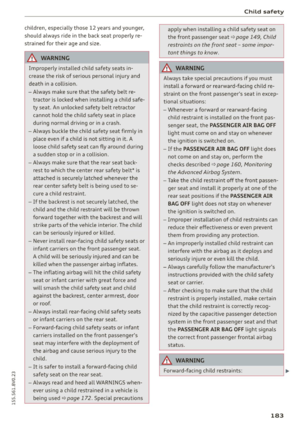 185
185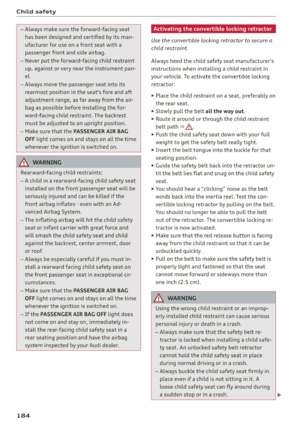 186
186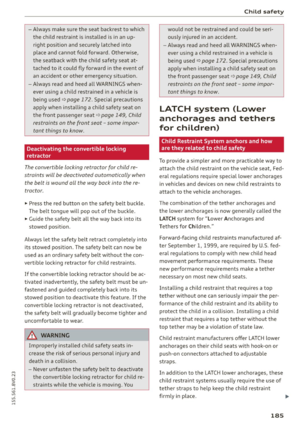 187
187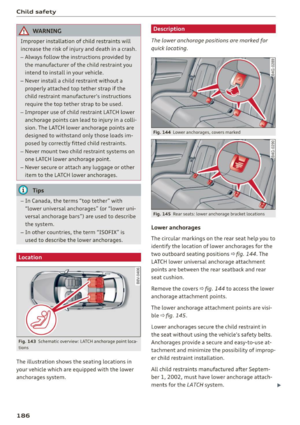 188
188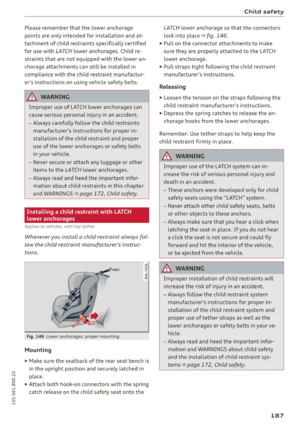 189
189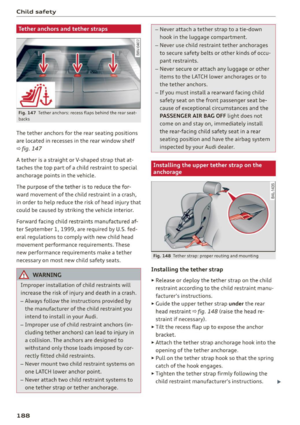 190
190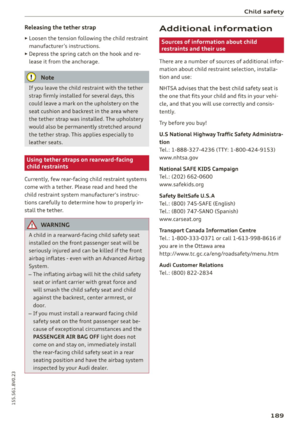 191
191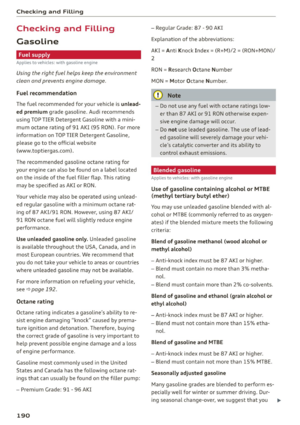 192
192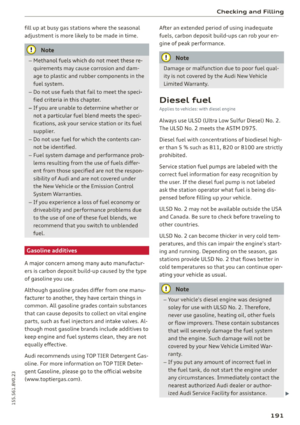 193
193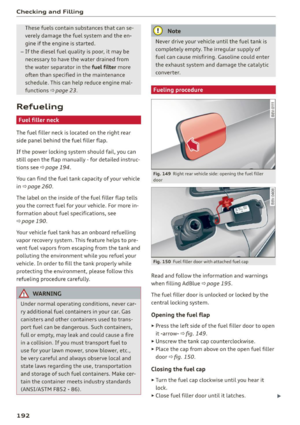 194
194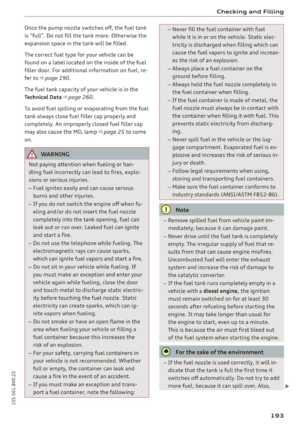 195
195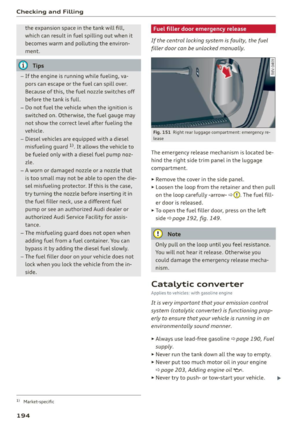 196
196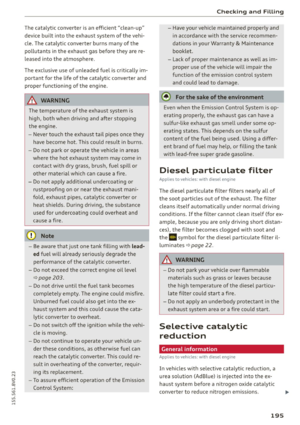 197
197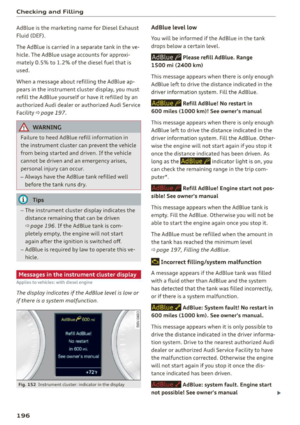 198
198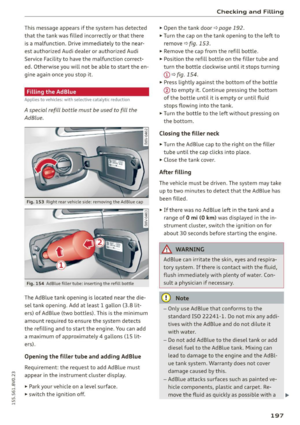 199
199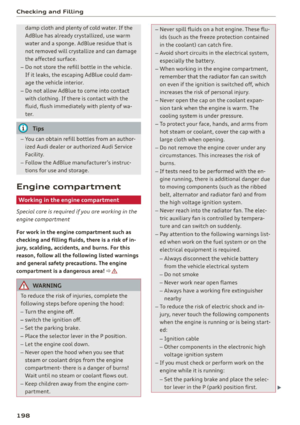 200
200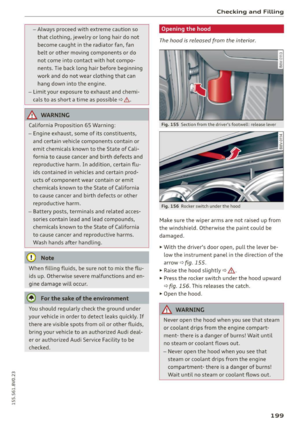 201
201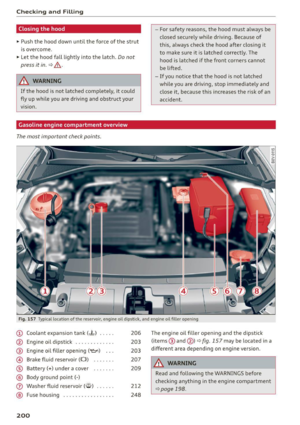 202
202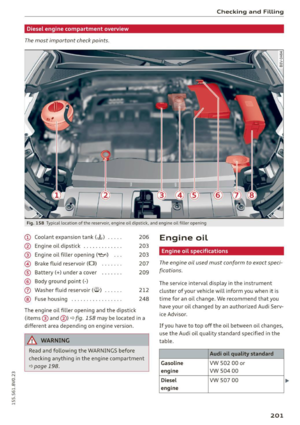 203
203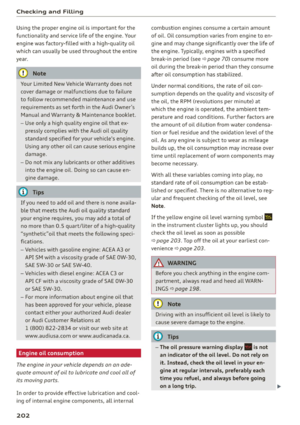 204
204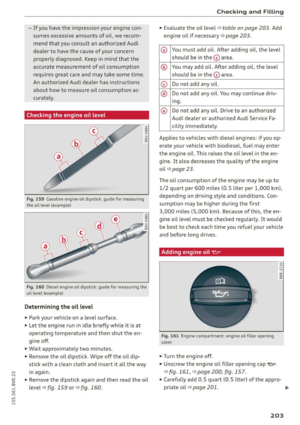 205
205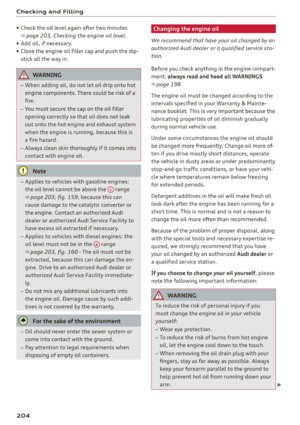 206
206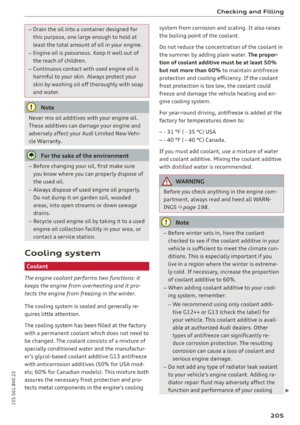 207
207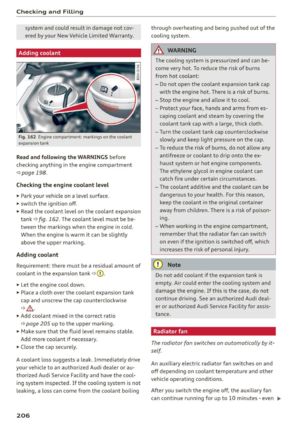 208
208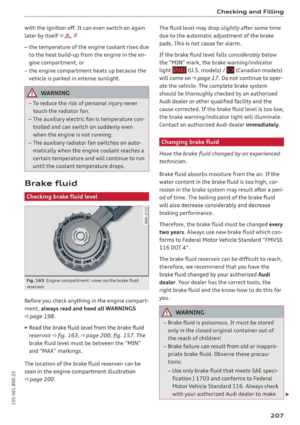 209
209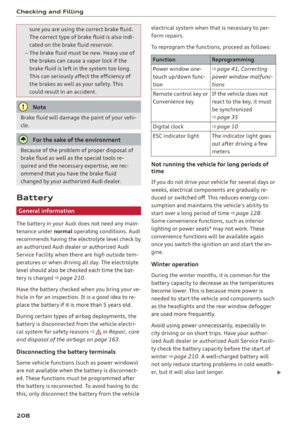 210
210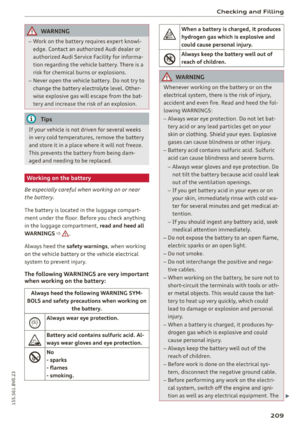 211
211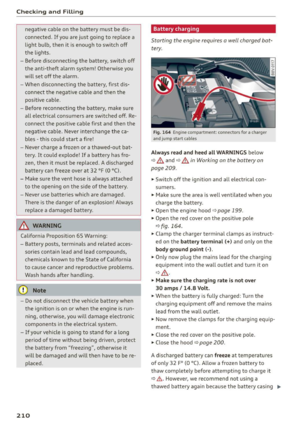 212
212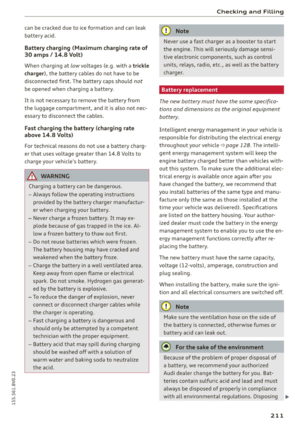 213
213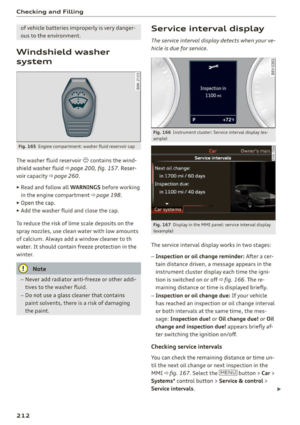 214
214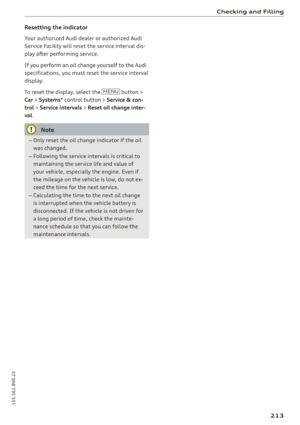 215
215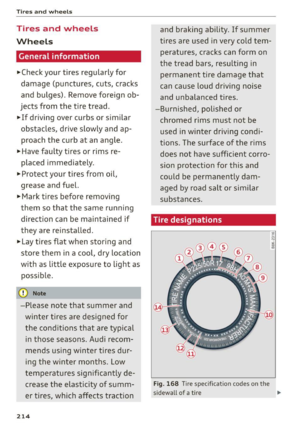 216
216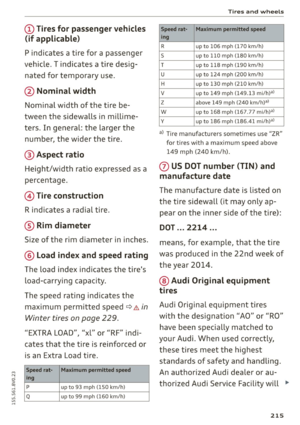 217
217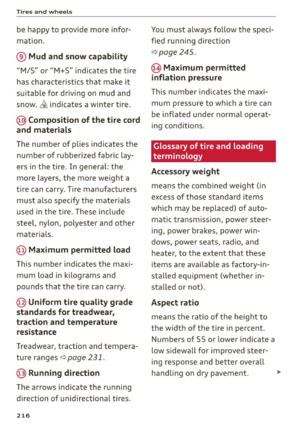 218
218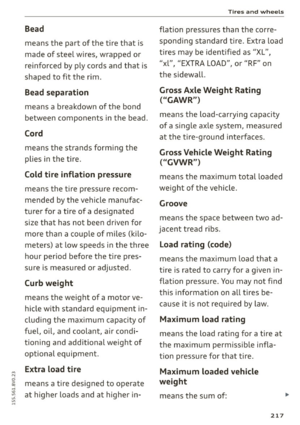 219
219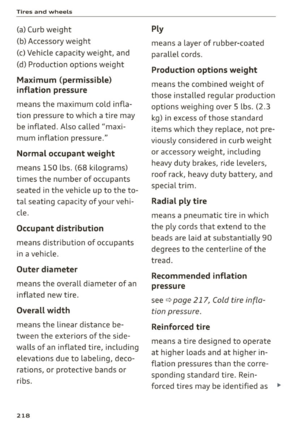 220
220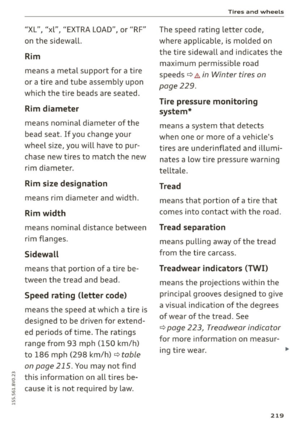 221
221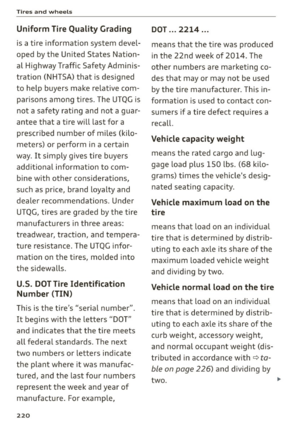 222
222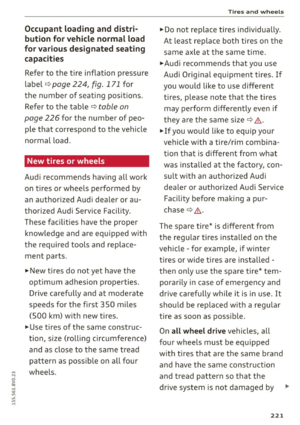 223
223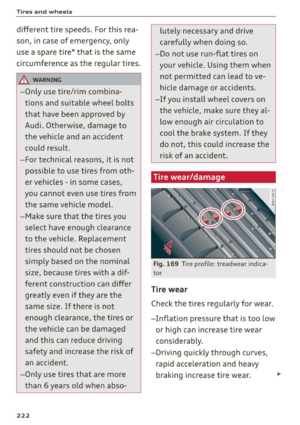 224
224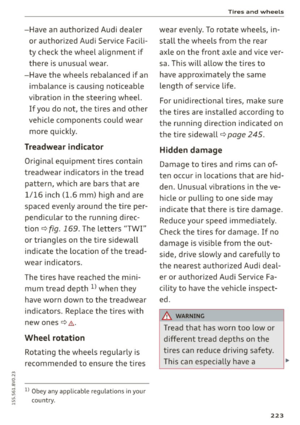 225
225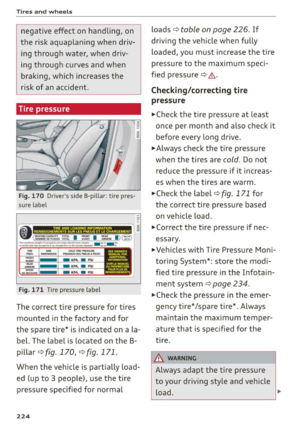 226
226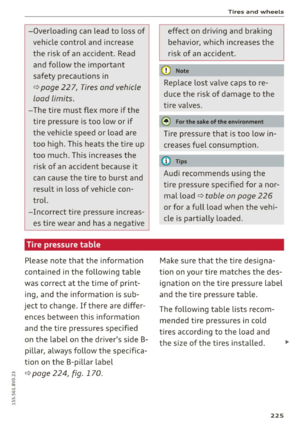 227
227 228
228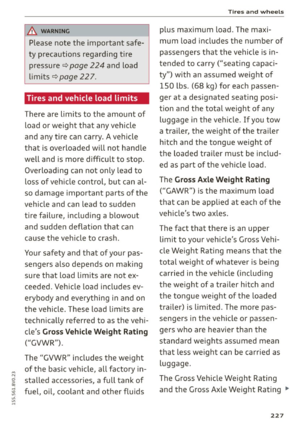 229
229 230
230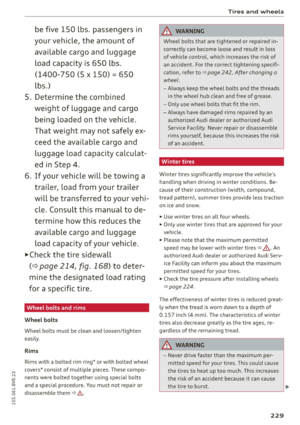 231
231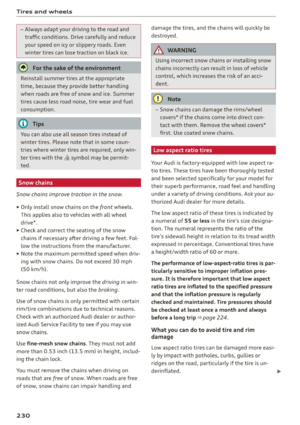 232
232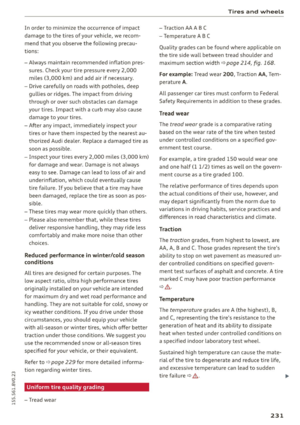 233
233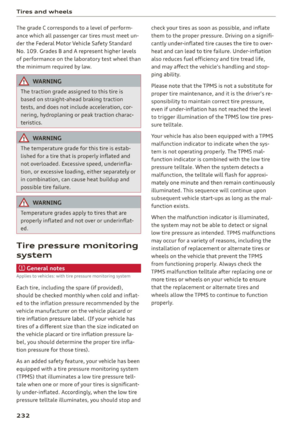 234
234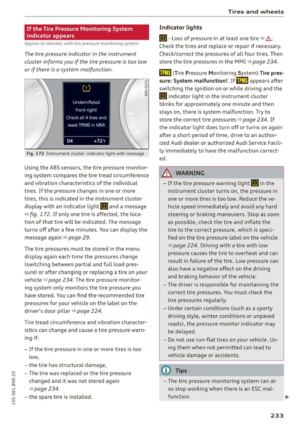 235
235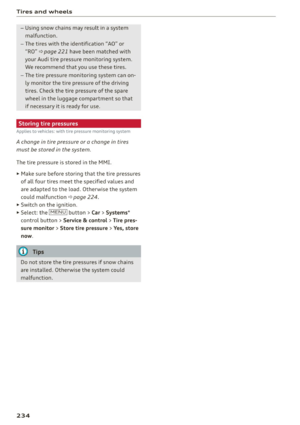 236
236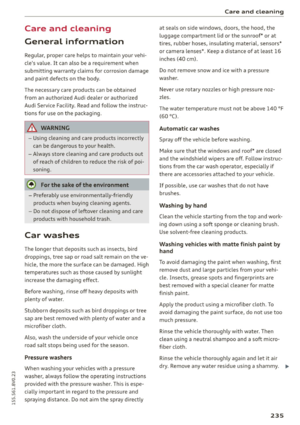 237
237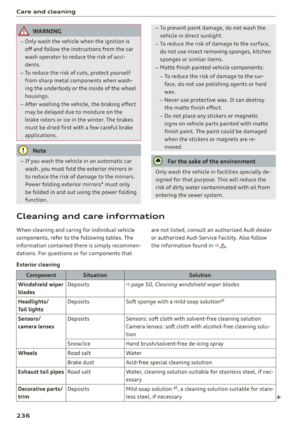 238
238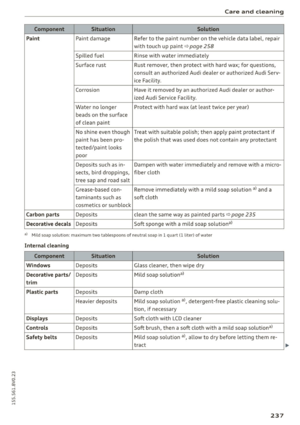 239
239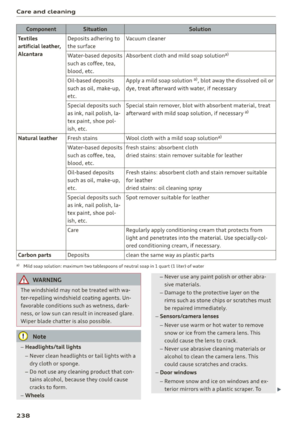 240
240 241
241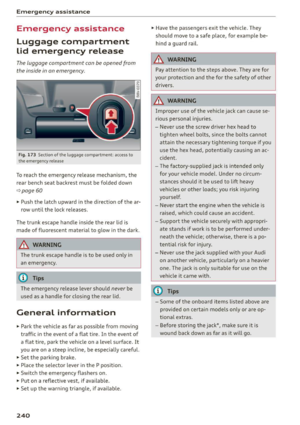 242
242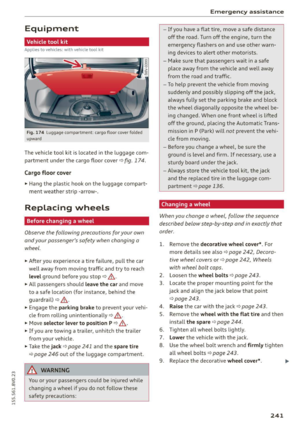 243
243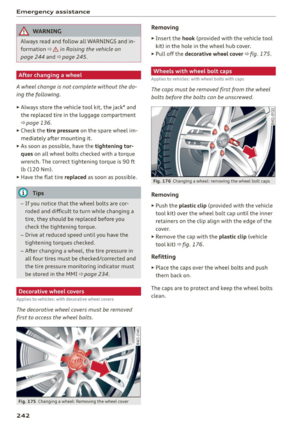 244
244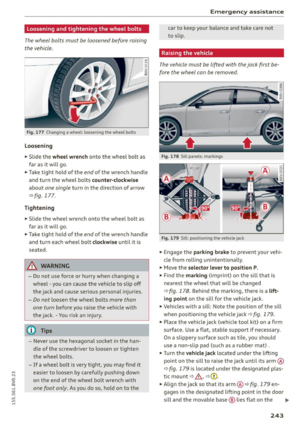 245
245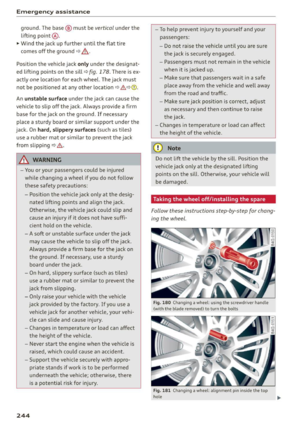 246
246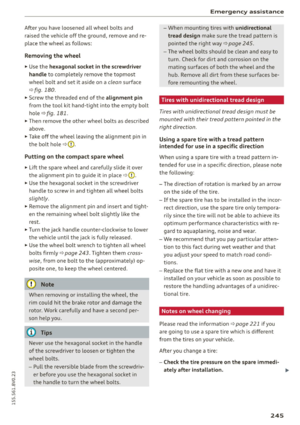 247
247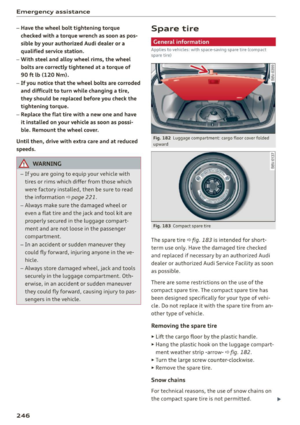 248
248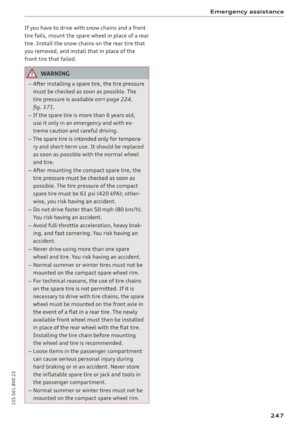 249
249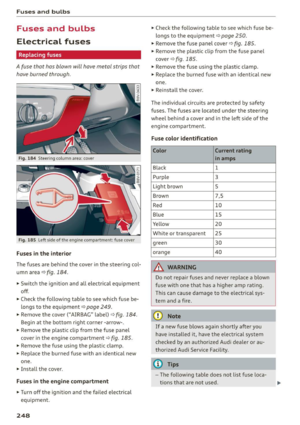 250
250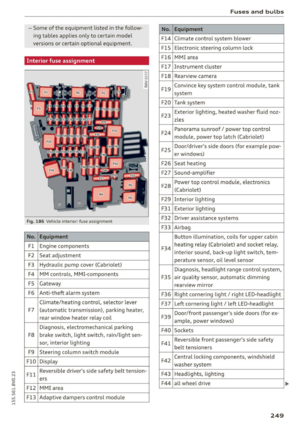 251
251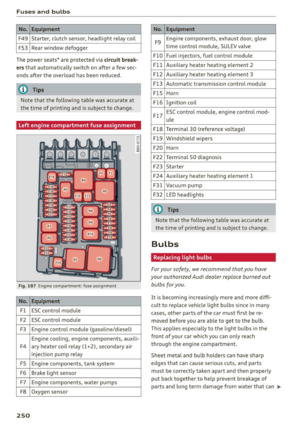 252
252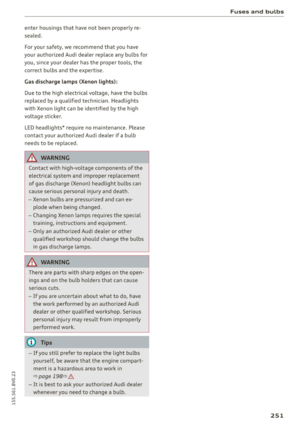 253
253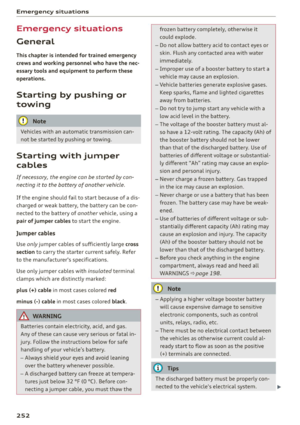 254
254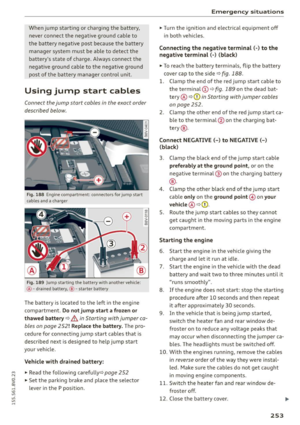 255
255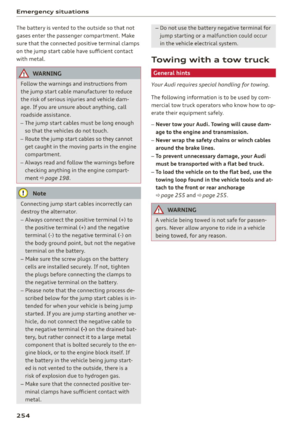 256
256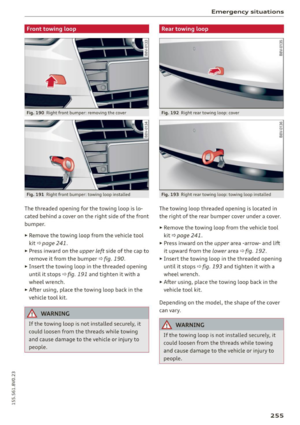 257
257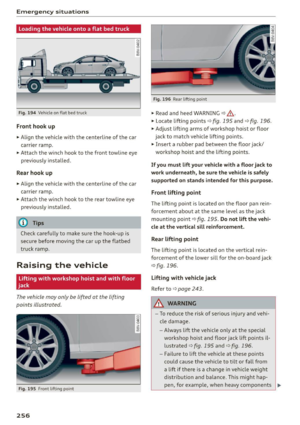 258
258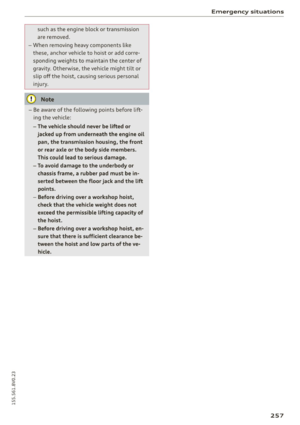 259
259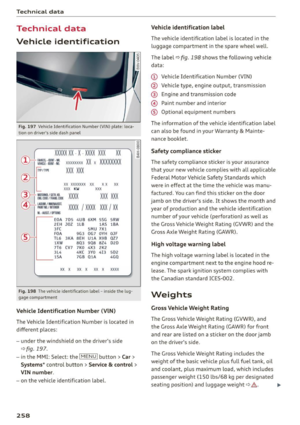 260
260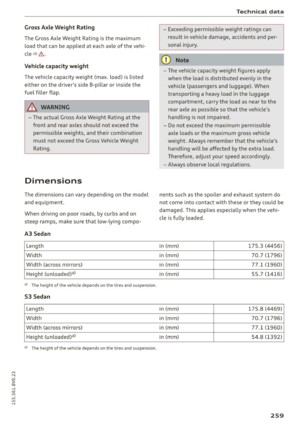 261
261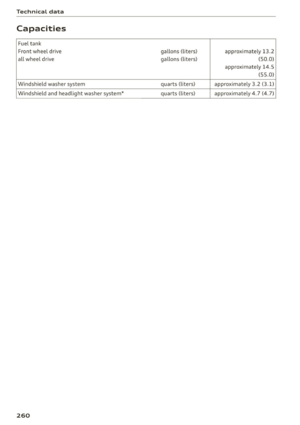 262
262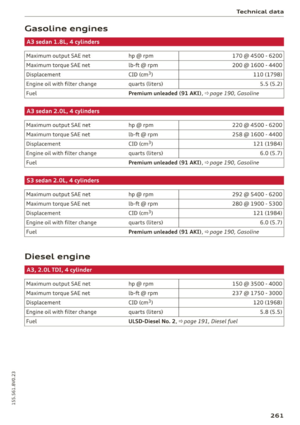 263
263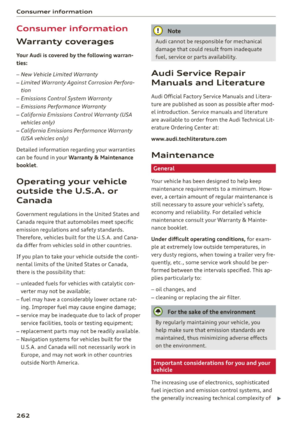 264
264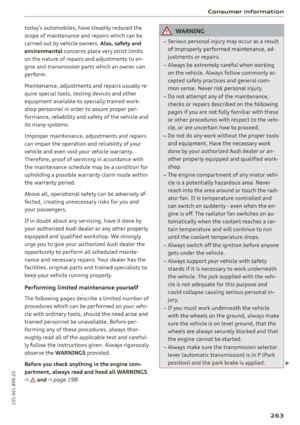 265
265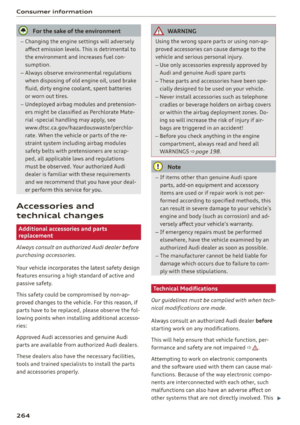 266
266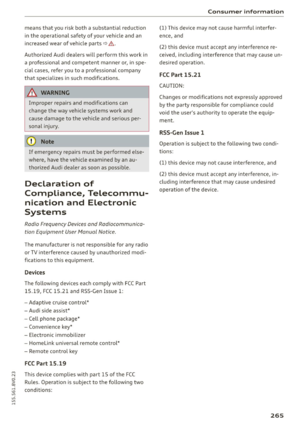 267
267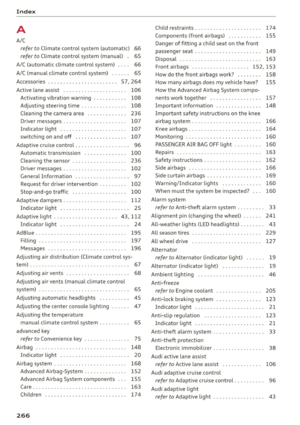 268
268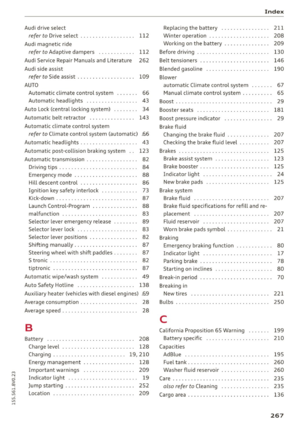 269
269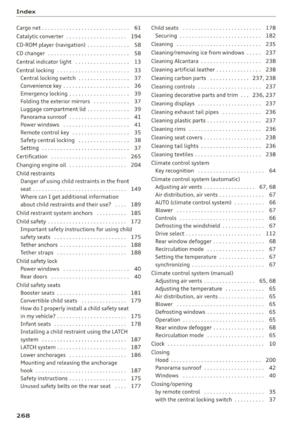 270
270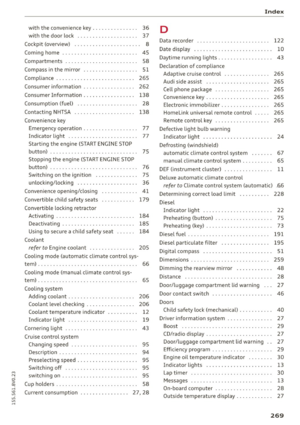 271
271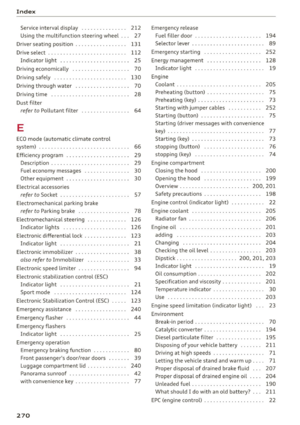 272
272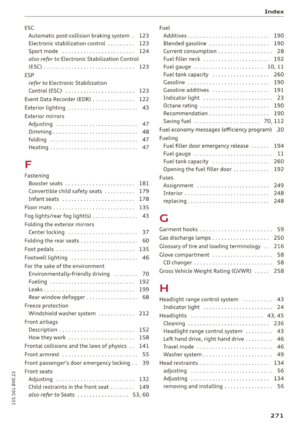 273
273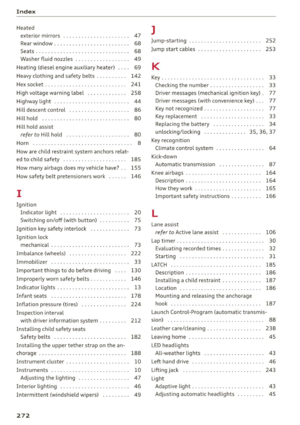 274
274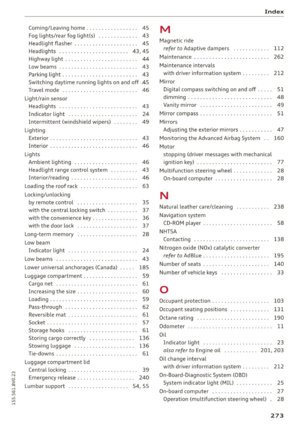 275
275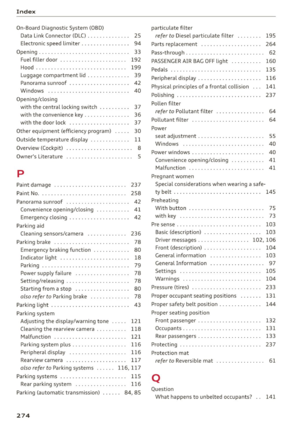 276
276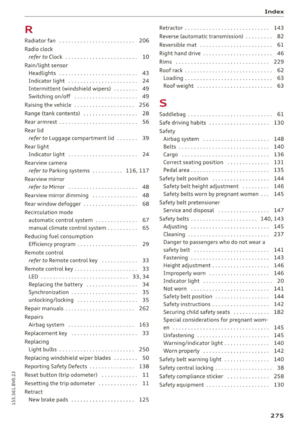 277
277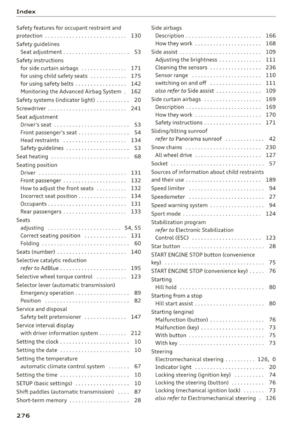 278
278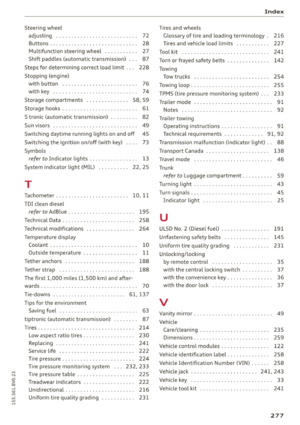 279
279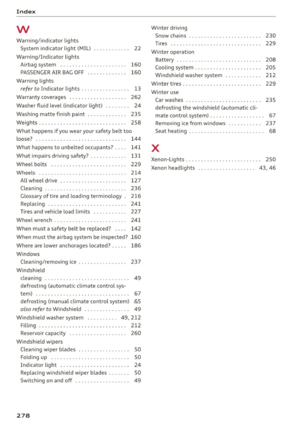 280
280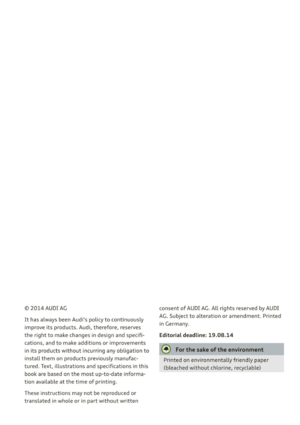 281
281



